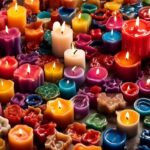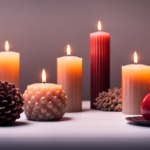Candles
What Do You Call a Candle Maker

Have you ever wondered what the correct term is for the person responsible for creating those beautiful, sparkling lights that bring warmth and coziness to our homes? Let me shed some light on this topic for you!
In the world of candle making, we are known as candle makers. Our passion lies in crafting these lovely creations that not only illuminate our surroundings but also create a cozy ambiance that soothes the soul. We take pride in our ability to blend fragrances, pour wax, and create unique designs that will enhance any space.
So, if you’re ever in need of a candle to brighten up your day or simply want to learn more about this fulfilling craft, look no further than us, the candle makers.
Key Takeaways
- Candle making has a long history and held great spiritual symbolism in early civilizations.
- Candle makers were known by various titles in different cultures and had specific knowledge and skills.
- The terminology for candle makers has evolved over time, with traditional names such as ‘chandler’ being replaced by modern terms like ‘candlemaker’ or ‘candle crafter’.
- Candle making offers various opportunities and benefits, including starting a business, becoming an instructor, therapeutic benefits, sustainability, and artistic expression.
The Origins of Candle Making
We learned that the origins of candle making can be traced back to ancient civilizations. Candle making techniques have been passed down through generations, evolving and adapting to different cultures and times.
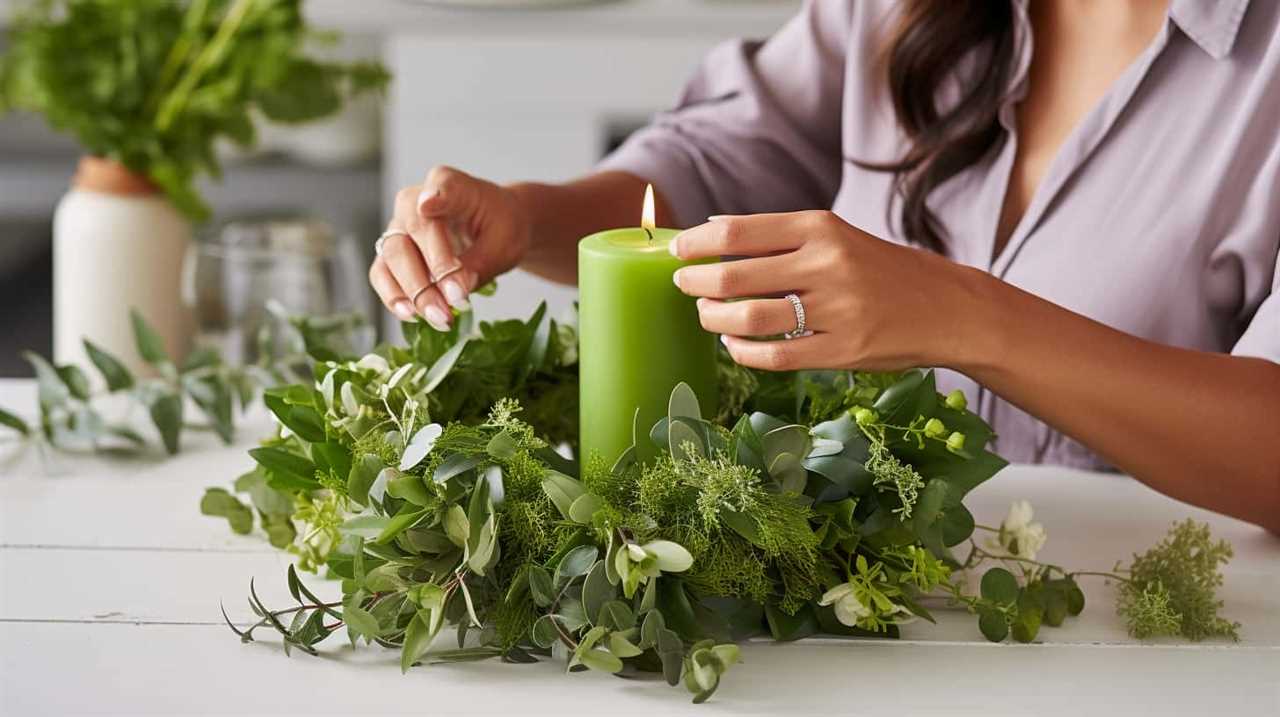
In these early civilizations, candles held great spiritual symbolism. They were used in religious ceremonies and rituals, symbolizing light, purity, and connection with the divine. The process of making candles was steeped in tradition and carried great importance. Each step, from selecting the wax to creating the wick, required precise knowledge and skill.
The significance of candles in these ancient cultures can’t be overstated. As we delve into the history of candle making, we’ll explore the early candle makers and their titles, shedding light on their contributions to this timeless craft.
Early Candle Makers and Their Titles
During ancient civilizations, candle makers were known by various titles that reflected their crucial role in creating candles. These early candle makers possessed a deep understanding of traditional candle making techniques, which were passed down through generations. They were revered for their expertise in sourcing and blending different types of wax, such as beeswax and tallow, to create candles with optimal burn times and fragrances.
Additionally, they held a profound knowledge of the symbolism of candles in different cultures. They recognized that candles represented spiritual enlightenment, purification, and even protection against evil in various belief systems. This knowledge allowed them to create candles with specific colors, shapes, and scents to serve the needs of individuals and communities.

Understanding the historical context and significance of early candle makers provides a foundation for exploring the traditional names for candle makers that have emerged throughout history.
Traditional Names for Candle Makers
Throughout history, candle makers have been known by a variety of traditional names. These names often reflect the cultural significance and symbolism of candles in different societies.
In many ancient civilizations, candle makers were revered for their craftsmanship and their ability to create light in the darkness. They used traditional candle making techniques, passed down through generations, to create candles that weren’t only practical but also held deep symbolic meaning.
For example, in ancient Egypt, candle makers were called ‘Luminators of the Pharaoh’ because their candles were believed to guide the souls of the deceased to the afterlife. Similarly, in medieval Europe, candle makers were known as ‘Lightweavers’ because they were seen as weaving light into the world.
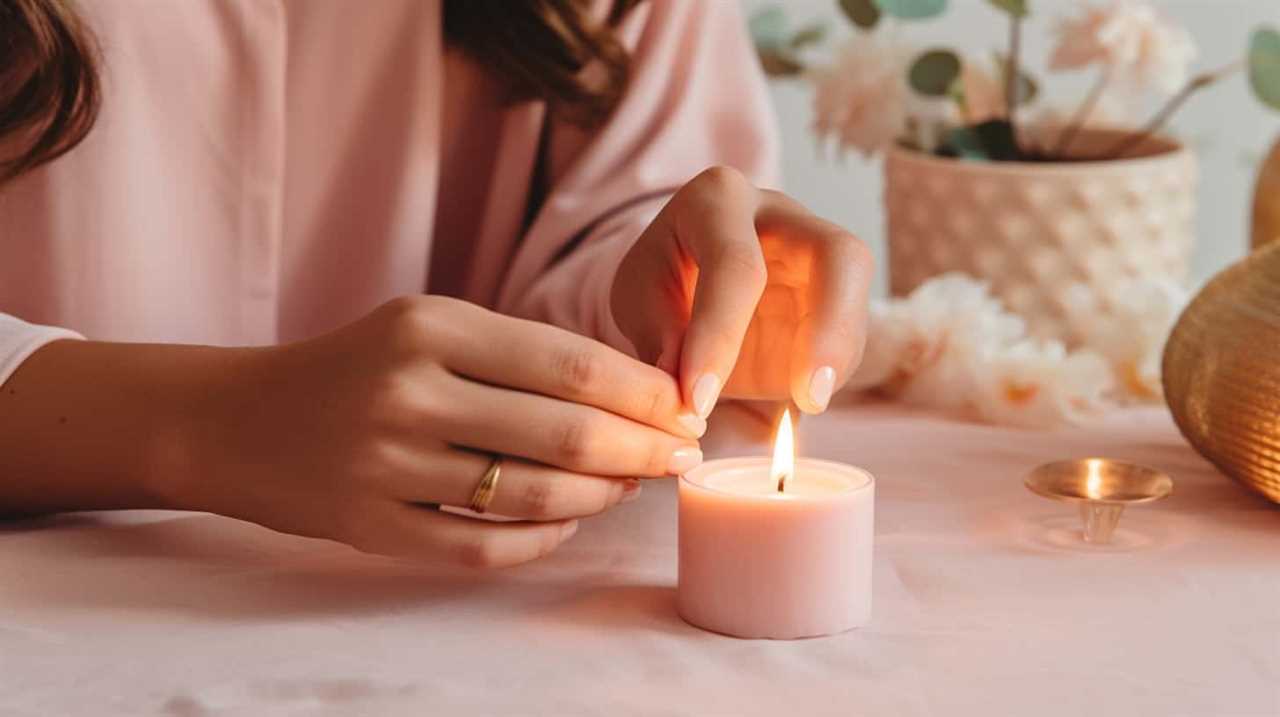
As we explore the traditional names for candle makers, it becomes clear that their role extended beyond the mere production of candles. They were seen as keepers of light and illuminators of the human spirit.
In the next section, we’ll delve into the modern terminology for candle makers, highlighting how their role has evolved over time.
Modern Terminology for Candle Makers
When it comes to modern terminology for candle makers, there are a few different terms that are commonly used.
One option is ‘candle artisan’, which emphasizes the artistic and creative aspect of candle making.
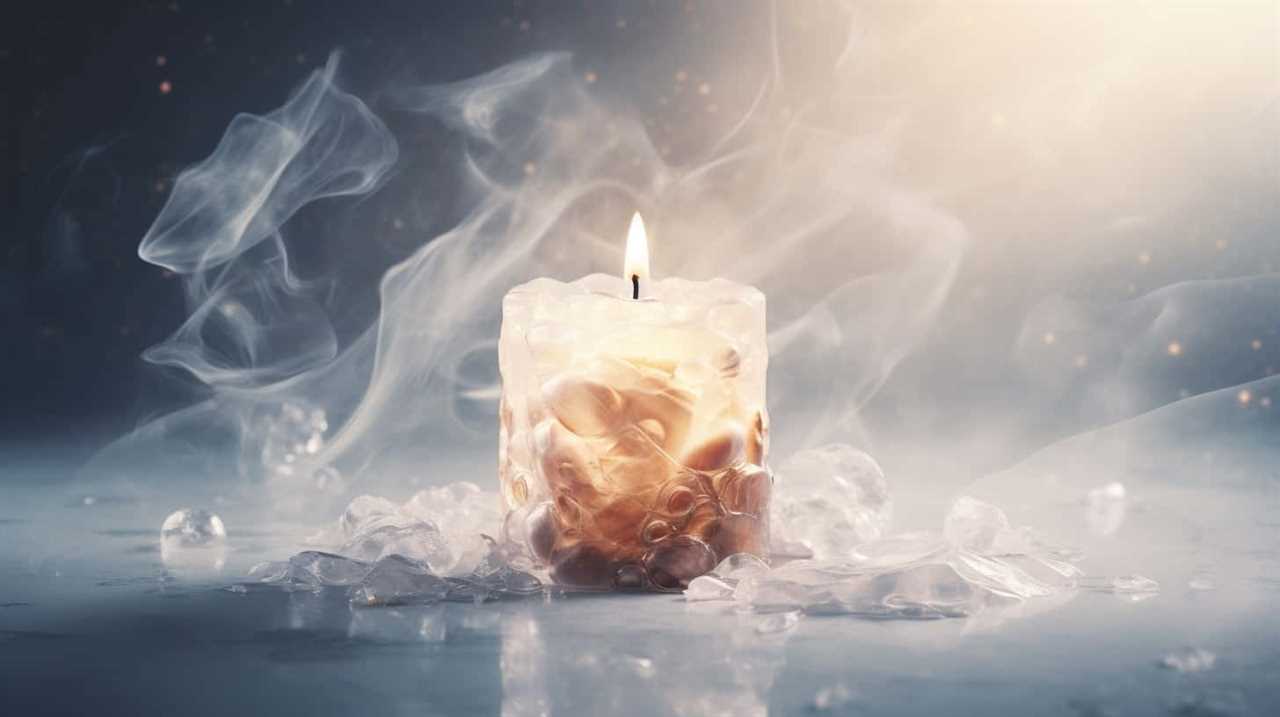
Another term is ‘chandler’, which has been used for centuries and refers to someone who makes and sells candles.
Lastly, some candle makers prefer to be called ‘wax crafters’ as it highlights the craftsmanship and skill involved in working with wax.
Each term brings its own connotations and it ultimately comes down to personal preference and how one wants to be perceived in the industry.
Candle Artisan Vs. Chandler
As candle enthusiasts, we often wonder about the distinction between a candle artisan and a chandler in modern terminology. Both terms refer to individuals involved in the craft of candle making, but there are subtle differences that set them apart.
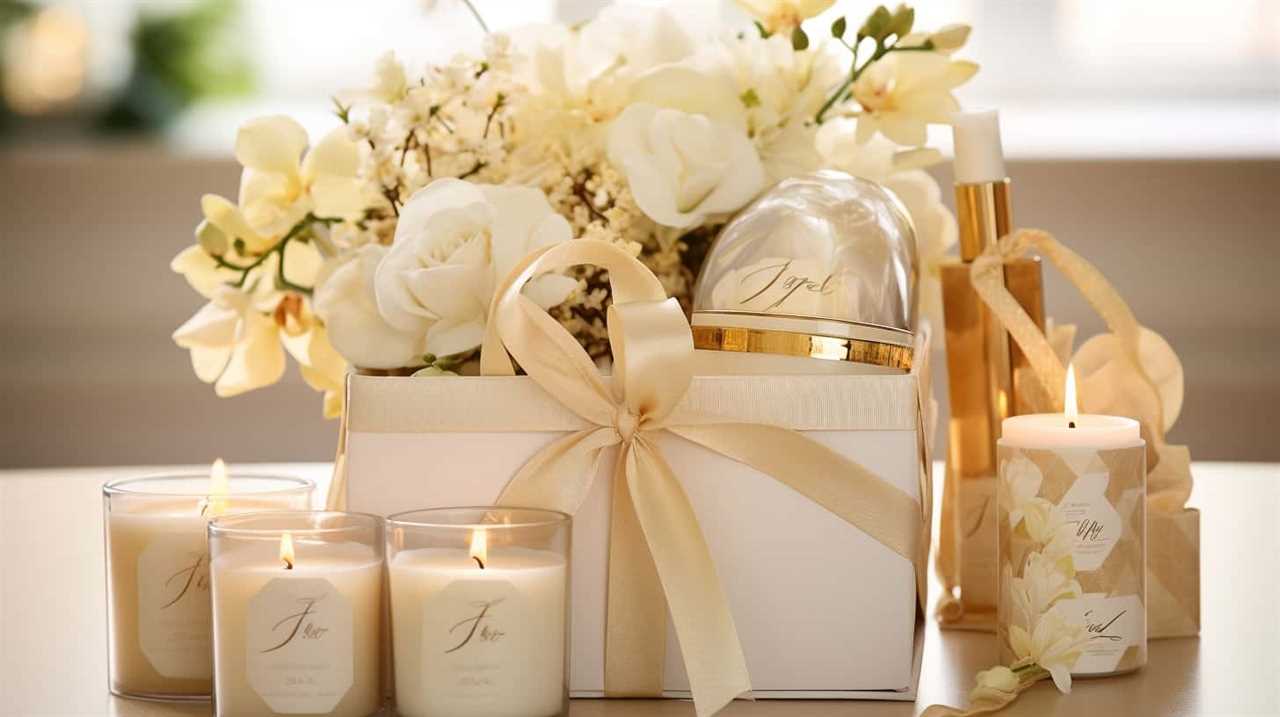
To shed light on this topic, let’s explore the deeper meaning behind these terms:
- Candle Artisan:
- Highly skilled individuals who create candles using various techniques, such as hand-pouring, sculpting, or carving.
- Known for their creativity and ability to produce unique and artistic candles that serve as decorative pieces or gifts.
- Chandler:
- Traditionally referred to individuals who made candles by dipping wicks into melted wax.
- In modern times, the term has evolved to encompass professionals involved in the mass production of candles.
Understanding the distinction between a candle artisan and a chandler allows us to appreciate the rich history and significance of candle making in different cultures. From illuminating religious ceremonies to symbolizing hope and celebration, candles hold a special place in our lives.
Wax Craft or Chemistry?
To further explore the topic of ‘Wax Craft or Chemistry? (Modern Terminology for Candle Makers)’, let’s delve into the fascinating world of candle making and its intersection with both artistic craftsmanship and scientific precision.
Wax artistry involves not only the skillful manipulation of wax but also an understanding of the chemical reactions that occur during the candle-making process.
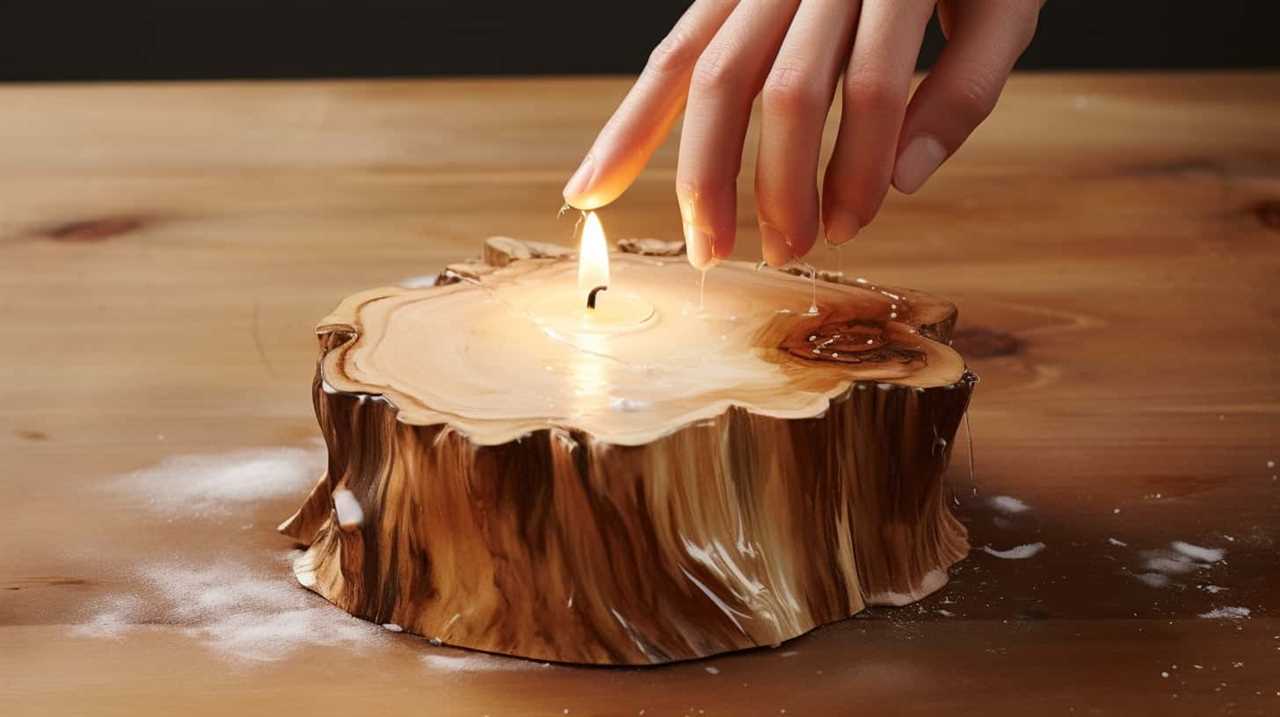
As candle makers, we aren’t just artists; we’re also chemists. We carefully select the type of wax to use, as different waxes have different melting points and burning characteristics. We experiment with various additives such as fragrance oils and colorants, understanding the chemical reactions that occur when these components are combined.
Additionally, we pay close attention to the wick selection, ensuring it’s the appropriate size and material for the specific wax being used. The wick plays a crucial role in ensuring a clean and efficient burn, and understanding its interaction with the wax is essential.
Common Job Titles in the Candle Making Industry
What job titles are commonly used in the candle making industry?
When it comes to the candle making industry, there are a variety of job titles that encompass the different roles and responsibilities involved in creating beautiful and unique candles.
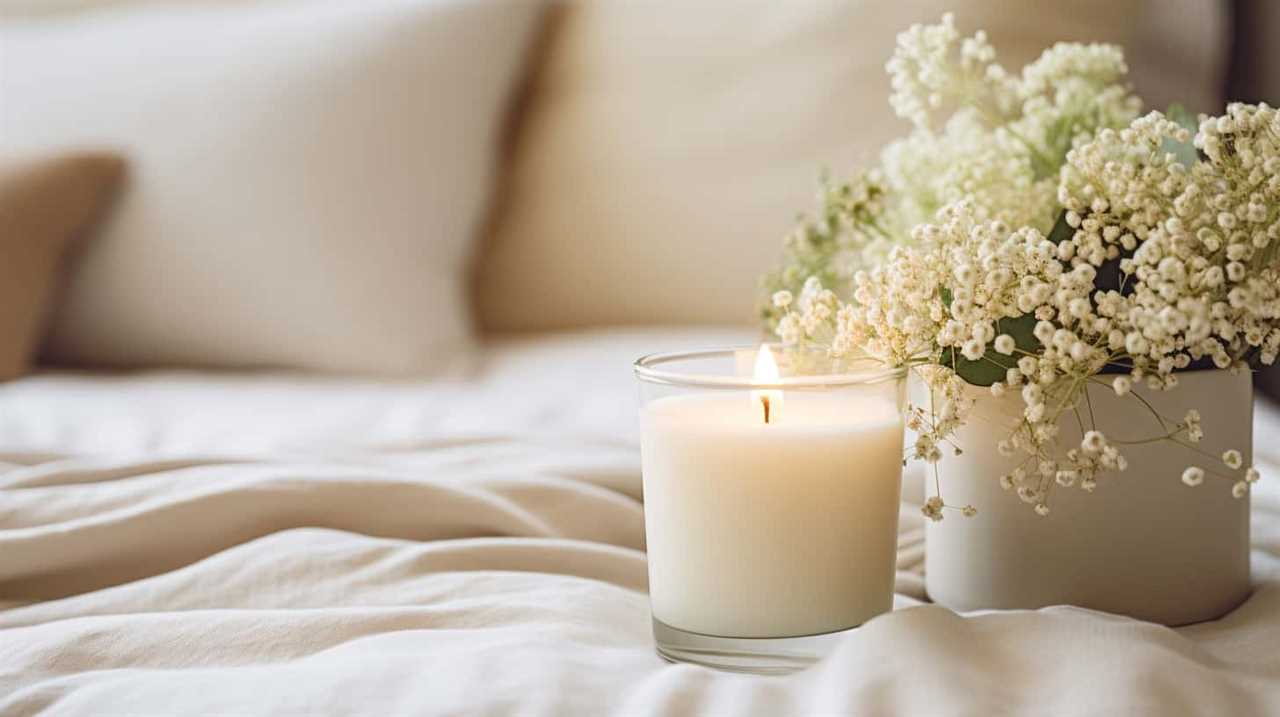
Here are some common job titles in the candle making industry:
- Candle Maker: This is the individual who specializes in creating candles from scratch, using various candle making techniques such as melting wax, adding fragrance and color, and pouring the mixture into molds.
- Candle Designer: This role involves conceptualizing and designing unique candle designs, taking into consideration aesthetics, functionality, and customer preferences.
- Production Manager: The production manager oversees the entire candle making process, ensuring that the production runs smoothly, meeting quality standards, and managing the work of the candle makers.
- Quality Control Specialist: This position is responsible for inspecting the candles to ensure that they meet the desired quality standards, checking for any defects or imperfections.
- Sales Representative: Sales representatives promote and sell candles to customers, providing product information, answering queries, and ensuring customer satisfaction.
These job titles play a crucial role in the candle making industry, contributing to the creation and distribution of beautiful, high-quality candles that bring joy and ambiance to people’s lives.
Unusual Names for Candle Makers
When it comes to the world of candle making, there are some creative individuals who come up with unique names for themselves. These unconventional monikers reflect their passion for the craft and their desire to stand out in a crowded market.
From ‘Creative Candle Crafts’ to ‘Candle Artisan Identities,’ these unusual names not only capture attention but also convey a sense of artistry and individuality.
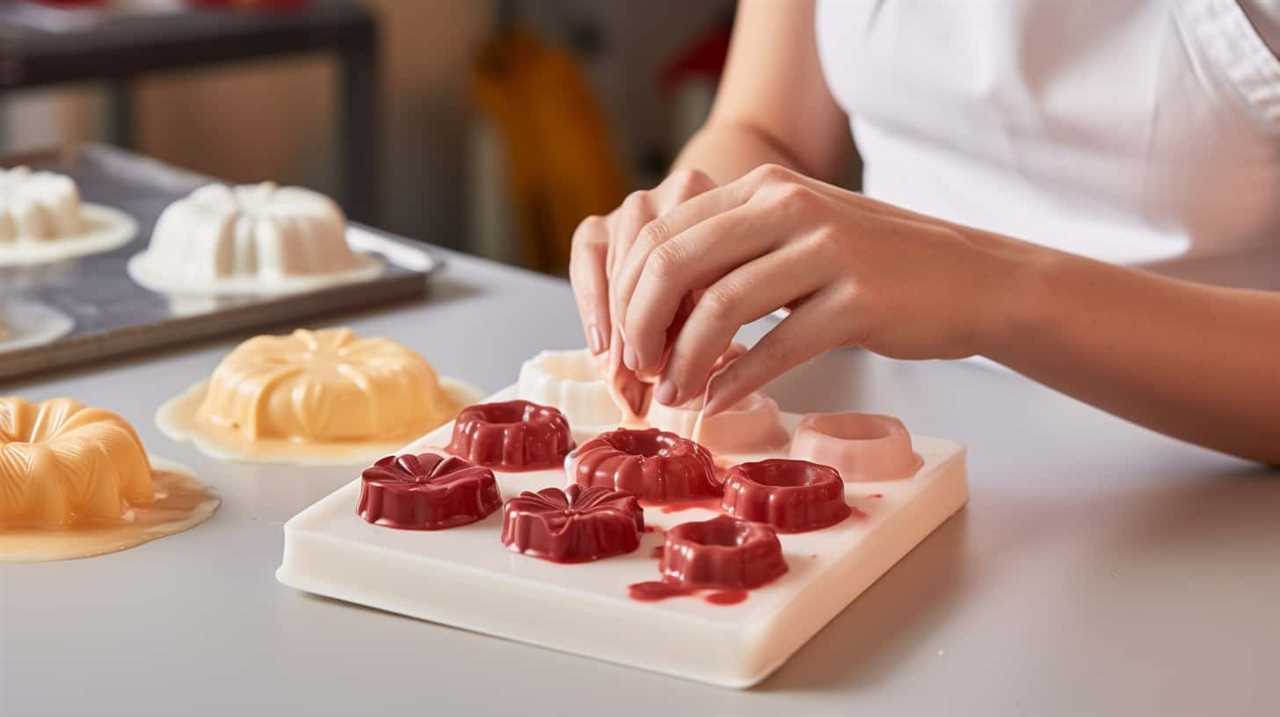
Creative Candle Crafts
We love getting creative with our candle crafts, especially when it comes to coming up with unusual names for candle makers. Here are some ideas to inspire you:
- Candle Packaging Innovators:
Think outside the box with unique candle packaging designs that stand out on the shelf.
Use eco-friendly materials and incorporate sustainable practices to appeal to environmentally-conscious customers. - Fragrance Artisans:
Experiment with unusual combinations of scents to create distinctive and captivating fragrances.
Incorporate unexpected elements like botanicals or spices to add depth and intrigue to your candles.
By focusing on creative candle packaging and unique candle fragrances, you can elevate your craft and offer customers an unforgettable experience.
But what about the artisans themselves? Let’s explore the world of candle artisan identities and the names that reflect their unique skills and contributions.
Candle Artisan Identities?
As candle enthusiasts, we often wonder about the unique identities that candle makers adopt to represent their craft. In the world of candle making, there’s a distinction between being a candle maker and a candle artist. While both involve the creation of candles, a candle maker is typically someone who focuses on producing candles for functional purposes, such as lighting or fragrance. On the other hand, a candle artist is someone who goes beyond functionality and uses candles as a medium for artistic expression. They create intricate designs, experiment with different colors and scents, and often produce candles that are meant to be displayed as works of art.
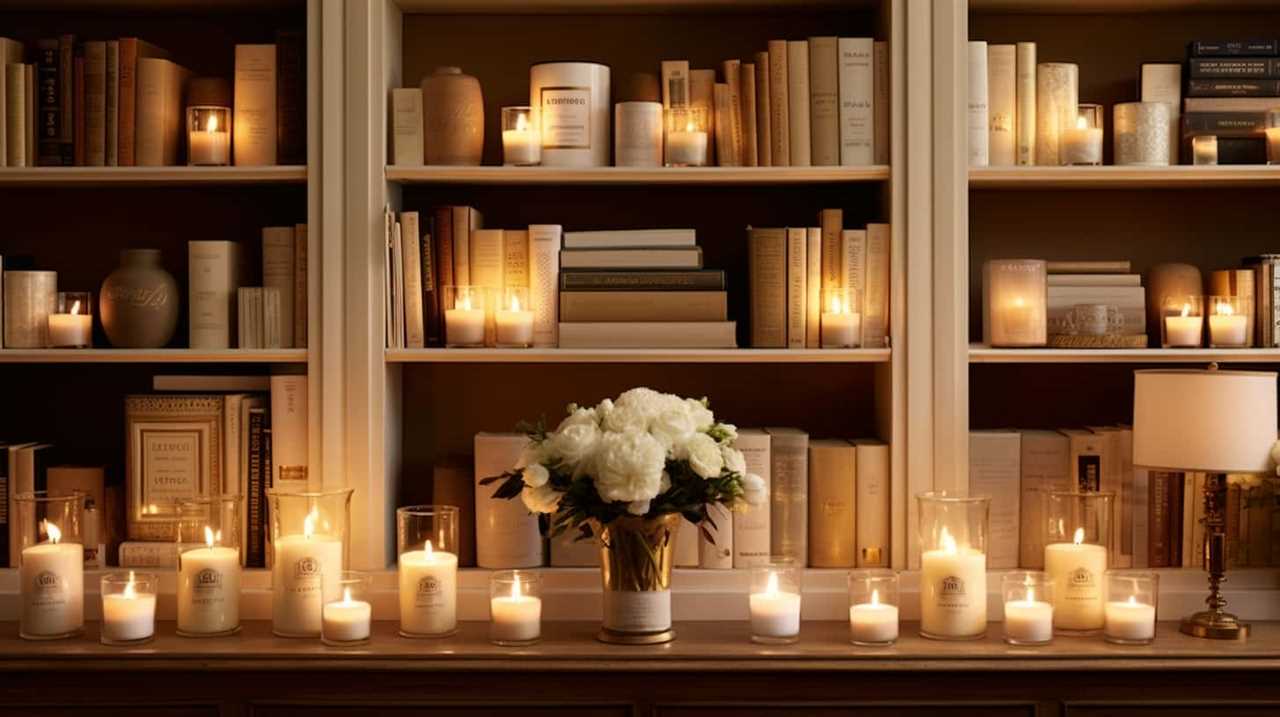
The significance of candle making varies across cultures. In some cultures, candles hold religious or spiritual significance and are used for rituals and ceremonies. In others, candles are associated with celebrations and joyous occasions. The art of candle making has evolved over centuries, with each culture adding its unique touch to the craft. From intricate carvings on beeswax candles in Eastern Europe to the vibrant colors and patterns of handmade candles in India, the significance of candle making is deeply ingrained in different cultures around the world.
Historical Significance of Candle Makers
The historical significance of candle makers lies in their contribution to illuminating the past and shaping the way people lived. Candle makers have played a vital role in history, utilizing early techniques to produce a much-needed source of light. Their impact on the economy can’t be understated, as the demand for candles created a thriving industry.
To delve deeper into their historical significance, consider the following points:
- Preservation of knowledge: Candle makers provided a means to extend productive hours, allowing people to read, write, and study long after the sun had set. This led to advancements in education and the dissemination of knowledge.
- Social and cultural impact: Candles weren’t only a practical source of light but also a symbol of status and wealth. The ability to afford and use candles in daily life was a sign of prosperity and refinement.
Cultural Variations in Naming Candle Makers
When it comes to cultural variations in naming candle makers, there are several interesting points to consider.
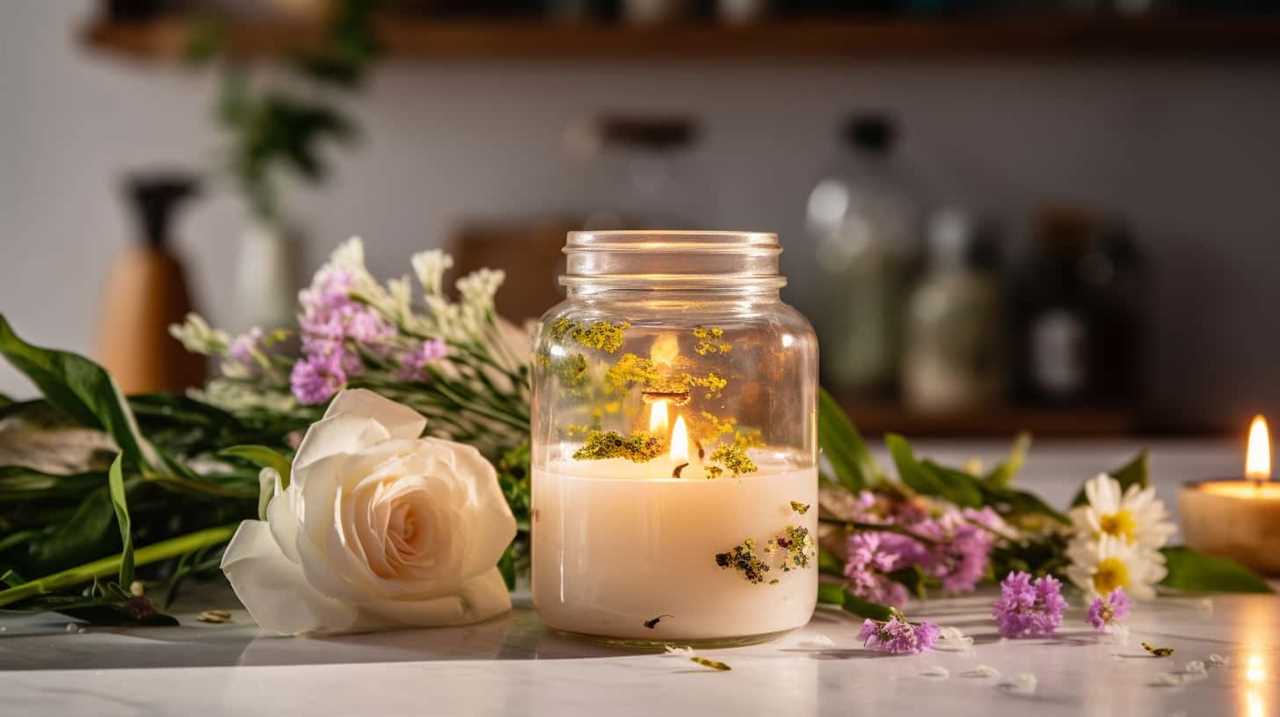
First, language and terminology play a significant role in how candle makers are referred to in different cultures.
Historical naming practices also play a part, as certain traditional names or titles may still be used today.
Additionally, regional differences can be observed, with some cultures having unique names for candle makers based on their specific traditions and practices.
Language and Terminology
Our cultural background influences the terminology we use to refer to candle makers. Language variations and terminology evolution play a significant role in how we name these skilled artisans. Here are two sub-lists that delve deeper into this topic:
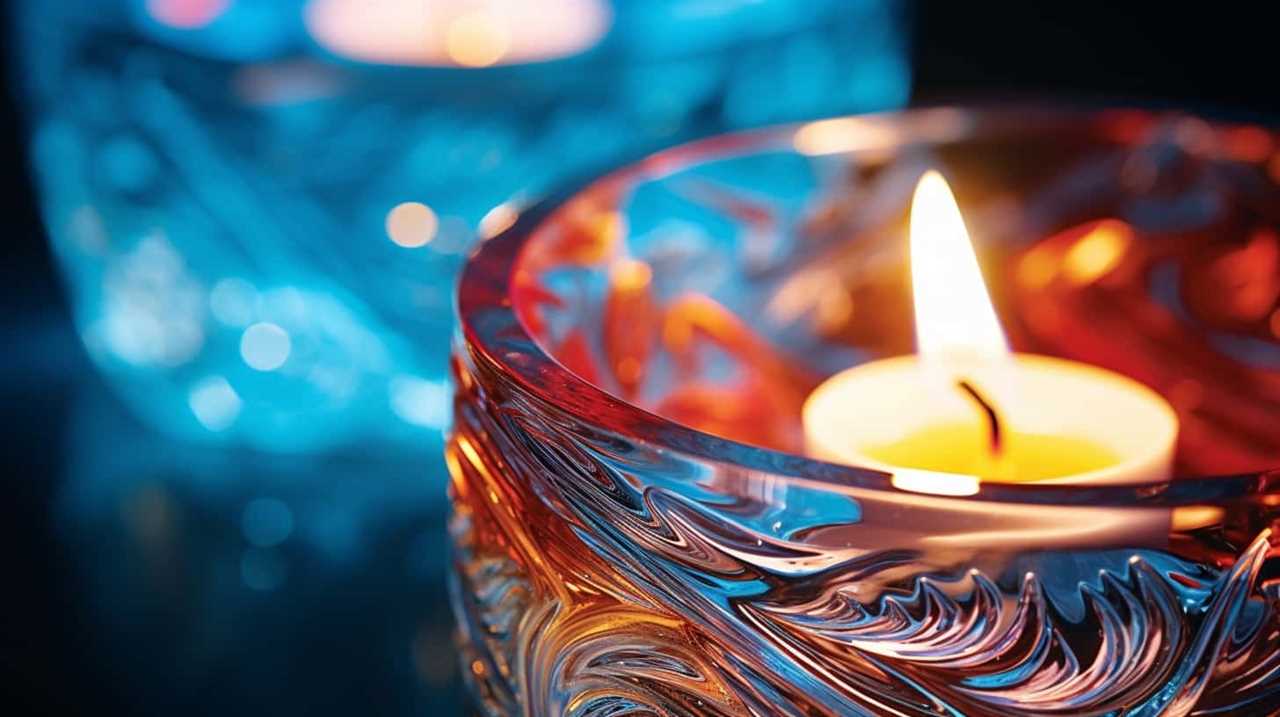
- Language Variations:
- Different cultures have their own unique words for candle makers. For example, in French, a candle maker is called a ‘chandler,’ while in German, they’re known as ‘kerzenmacher.’
- Regional dialects and local customs can also impact the language used to describe candle makers. In certain areas, they may be called ‘candle smiths’ or ‘candle artisans.’
- Terminology Evolution:
- Over time, the terminology used to refer to candle makers has evolved. Traditional terms like ‘chandler’ have given way to more modern terms such as ‘candlemaker’ or ‘candle crafter.’
- With the rise of the handmade and artisanal movement, new terms like ‘candle artisan’ or ‘candle designer’ have emerged to highlight the craftsmanship and creativity involved in candle making.
Understanding these language variations and terminology evolution can deepen our appreciation for the rich cultural heritage and craftsmanship of candle makers.
Historical Naming Practices
Throughout history, among various cultures and languages, candle makers have been known by different names that reflect their unique cultural traditions and practices. Historical naming practices reveal the rich tapestry of cultural variations in naming candle makers. Let’s take a look at a few examples in the table below:
| Culture | Language | Name for Candle Maker |
|---|---|---|
| Ancient Egypt | Hieroglyphics | "Seshen" |
| Medieval Europe | Latin | "Cirinarius" |
| Japan | Japanese | "Andon-ya" |
| India | Sanskrit | "Roshanakaara" |
| Native American | Lakota | "Tapa Wachi" |
In Ancient Egypt, candle makers were called "Seshen" in Hieroglyphics, while in Medieval Europe, they were known as "Cirinarius" in Latin. The Japanese referred to candle makers as "Andon-ya," and in India, they were called "Roshanakaara" in Sanskrit. The Native American Lakota tribe referred to candle makers as "Tapa Wachi." These diverse names highlight the cultural variations in naming candle makers and demonstrate the significance of candles in different societies throughout history.
Regional Naming Differences
As we delve into regional naming differences for candle makers, it’s interesting to explore the cultural variations in how they’ve been referred to throughout history. Different cultures and regions have developed unique names for those who craft candles, reflecting their own traditions and perspectives.
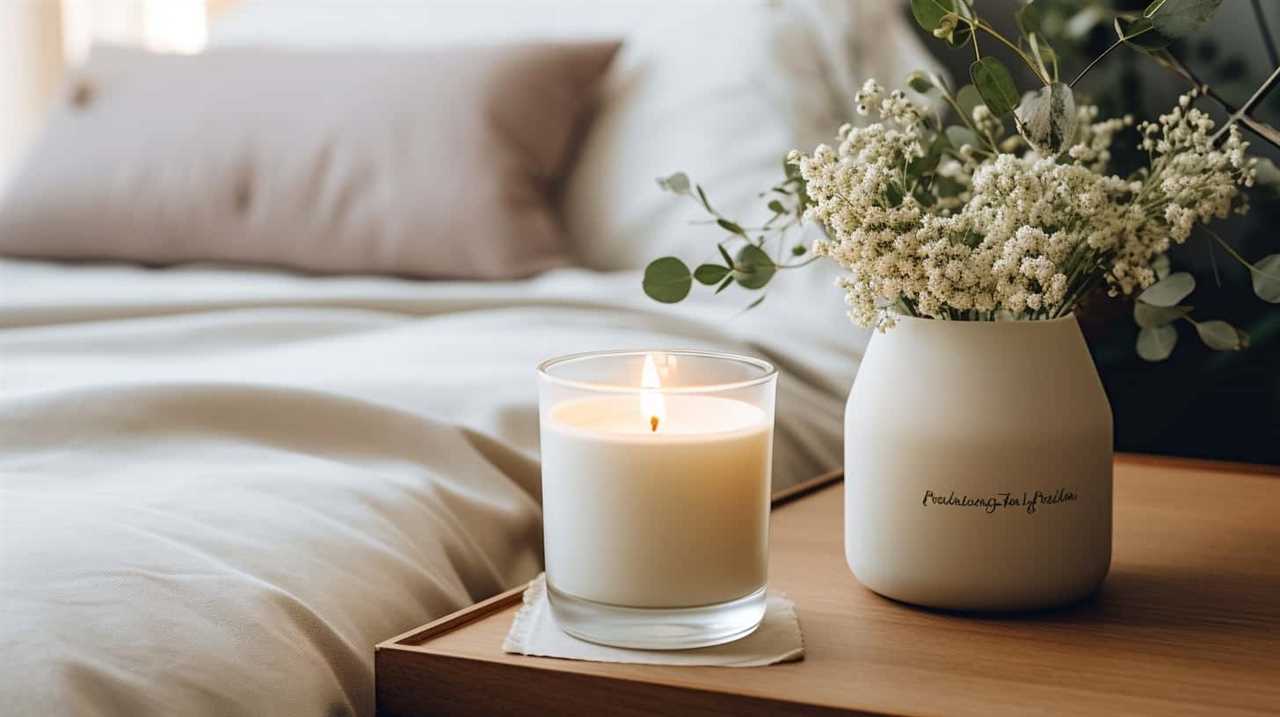
Some examples of regional naming differences include:
- In India, candle makers are often called ‘diya makers,’ as the traditional Indian candles are known as diyas.
- In Japan, candle makers are referred to as ‘andonshokunin,’ which translates to ‘lantern craftsmen,’ highlighting the importance of candles in traditional Japanese lanterns.
- In the United States, the term ‘chandler’ was historically used to describe candle makers, derived from the Old French word ‘chandelier,’ meaning candle holder.
Understanding these regional naming differences provides insight into the diverse cultural significance and practices surrounding candle making.
Now, let’s explore how candle making has evolved over time.
How Candle Making Has Evolved Over Time
Over the years, the candle making industry has witnessed significant advancements and transformations. The evolution of candle making techniques has been driven by the impact of technology on candle production.
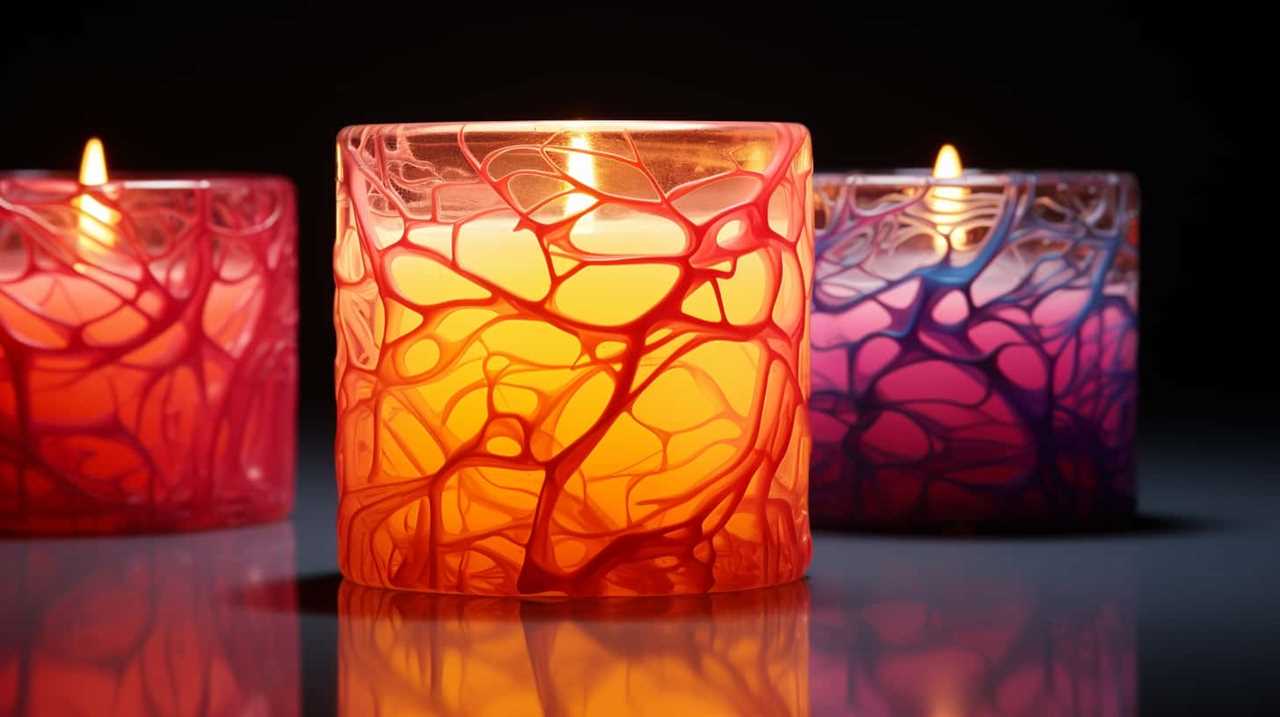
In the past, candles were made by hand using traditional methods such as dipping or molding. However, with the advent of technology, the process has become more efficient and streamlined. Modern candle making techniques now involve automated machinery and specialized equipment that can produce candles in large quantities without compromising on quality.
Technology has also allowed for the development of new and innovative candle designs, such as scented candles and decorative shapes. These advancements haven’t only improved the production process but also enhanced the overall customer experience by offering a wider variety of candles to choose from.
Famous Candle Makers Throughout History
In our exploration of candle making’s evolution, we come across numerous famous candle makers who’ve left an indelible mark on the industry’s history. These individuals haven’t only mastered the art of candle making but have also contributed significantly to its development and popularity.
Here are two sub-lists that shed light on the achievements of these famous candle makers:
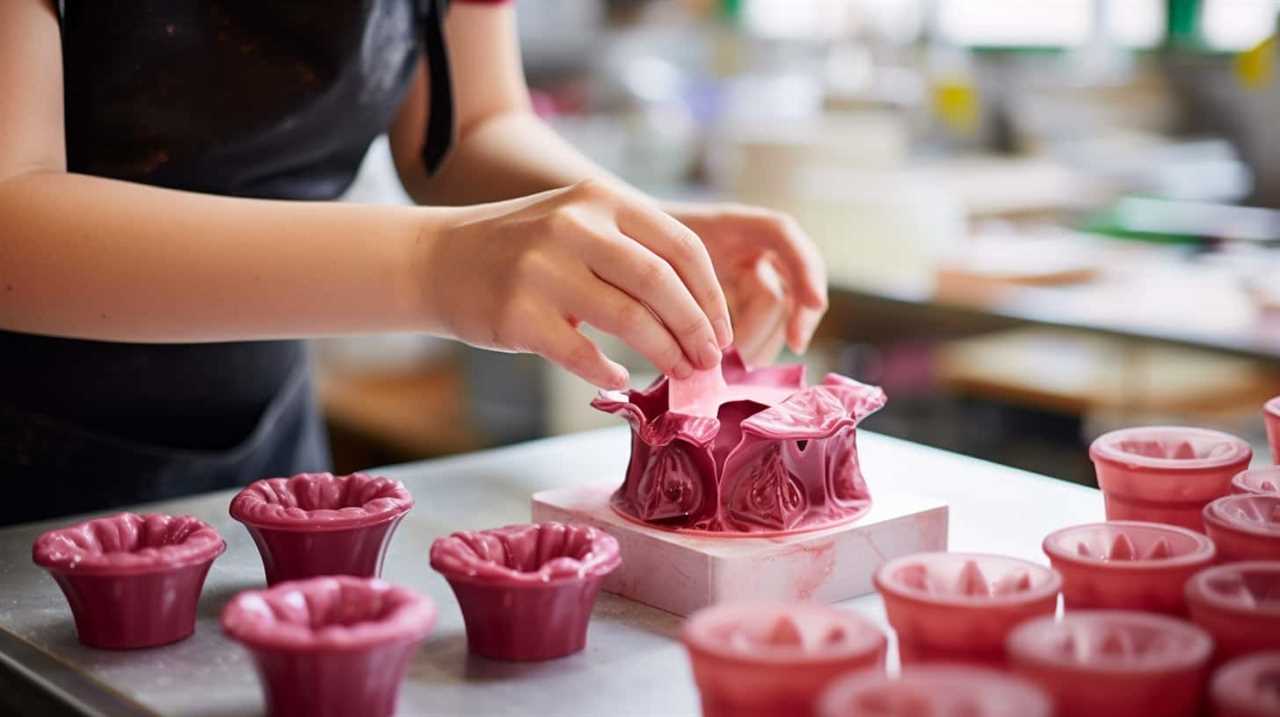
- Innovators:
- Michael Richards: Known for his groundbreaking techniques in candle making, Richards revolutionized the industry by introducing new materials and designs.
- Emma Thompson: A visionary candle maker, Thompson pioneered the use of natural and sustainable ingredients, setting a new standard for eco-friendly candle production.
- Artistic Masters:
- Vincent Van Gogh: Renowned for his exceptional artistic abilities, Van Gogh also dabbled in candle making, creating exquisite hand-poured candles that reflected his unique style.
- Georgia O’Keeffe: A celebrated artist, O’Keeffe’s love for nature extended to her candle making, where she captured the essence of landscapes and flowers in her beautifully crafted creations.
These famous candle makers haven’t only elevated the craft but have also inspired generations of candle enthusiasts with their unparalleled creativity and dedication.
The Role of Candle Makers in Society
Candle makers play a vital role in society, contributing to the ambiance, traditions, and practicality of lighting in our lives. Candle making isn’t just a craft, but also a form of art that requires skill and creativity. From selecting the right wax and fragrance to carefully pouring and shaping the candles, every step is meticulously executed to create beautiful and functional pieces.
These candles enhance special occasions, create a cozy atmosphere, and provide a sense of tranquility. However, it’s important to consider the environmental impact of candle production. Sustainable practices, such as using natural and renewable materials, reducing waste, and opting for non-toxic ingredients, can help minimize the ecological footprint.
Candle makers have a responsibility to create products that not only bring joy and beauty, but also contribute to a greener world.
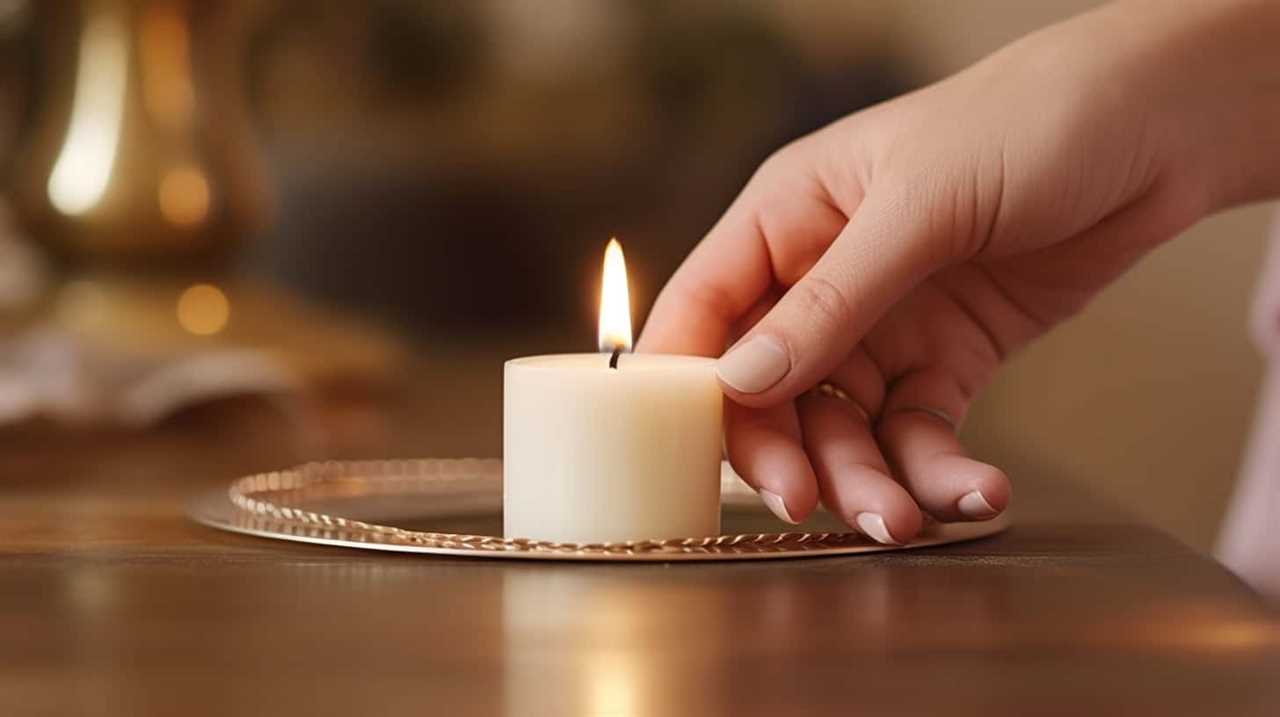
Career Paths for Aspiring Candle Makers
As aspiring candle makers, we can explore various career paths that allow us to express our creativity and passion for crafting beautiful and functional candles. Here are two career paths to consider:
- Independent Candle Maker: Many aspiring candle makers choose to start their own independent candle making business. This allows us to have full creative control over our products, from choosing the candle making techniques to selecting the scents and designs. We can sell our candles online, in local markets, or even open our own brick-and-mortar store. To succeed in this path, we need to develop effective marketing strategies for candle makers, such as creating a strong brand, utilizing social media platforms, and participating in craft fairs and events.
- Candle Making Instructor: Sharing our knowledge and passion for candle making by becoming a candle making instructor is another rewarding career path. We can offer workshops and classes where we teach others the art of candle making techniques. This not only allows us to showcase our expertise but also provides an opportunity to serve others by helping them learn a new skill and unleash their creativity. To excel in this path, we need to develop instructional materials, establish a strong network within the candle making community, and market our classes to potential students.
Frequently Asked Questions
What Are the Different Types of Wax Used in Candle Making?
There are various types of wax used in candle making, each with its own benefits. One popular option is soy wax, known for its clean burn and eco-friendly properties.
How Long Does It Typically Take to Make a Candle From Start to Finish?
When making candles, it typically takes us a few hours from start to finish. We’ve learned various candle making techniques to avoid common mistakes and ensure a high-quality product for our customers.
What Are Some Common Safety Precautions That Candle Makers Should Follow?
When it comes to candle making safety precautions, it’s essential to prioritize the well-being of both ourselves and those we serve. Proper ventilation is crucial in ensuring a safe and healthy environment for crafting candles.

Are There Any Specific Tools or Equipment That Are Essential for Candle Making?
Essential candle making tools include a double boiler, thermometer, pouring pot, wick holders, and a scale. A candle making equipment checklist should also include a heat source, molds, fragrance oils, and dyes.
Can You Provide Any Tips or Advice for Someone Who Wants to Start Their Own Candle Making Business?
Starting a candle making business involves essential steps like researching the market, creating a business plan, and acquiring necessary equipment. Effective marketing strategies such as online presence, social media promotion, and collaborations can help reach a wider audience and grow the business.
Conclusion
In conclusion, candle making has a rich history with dedicated artisans who’ve contributed to the craft over time. Today, the candle making industry continues to thrive with various job titles such as chandler, candle maker, and candle artisan.
Interestingly, the global candle market is projected to reach a value of $6.7 billion by 2025, indicating the continued popularity and demand for candles in our modern society.
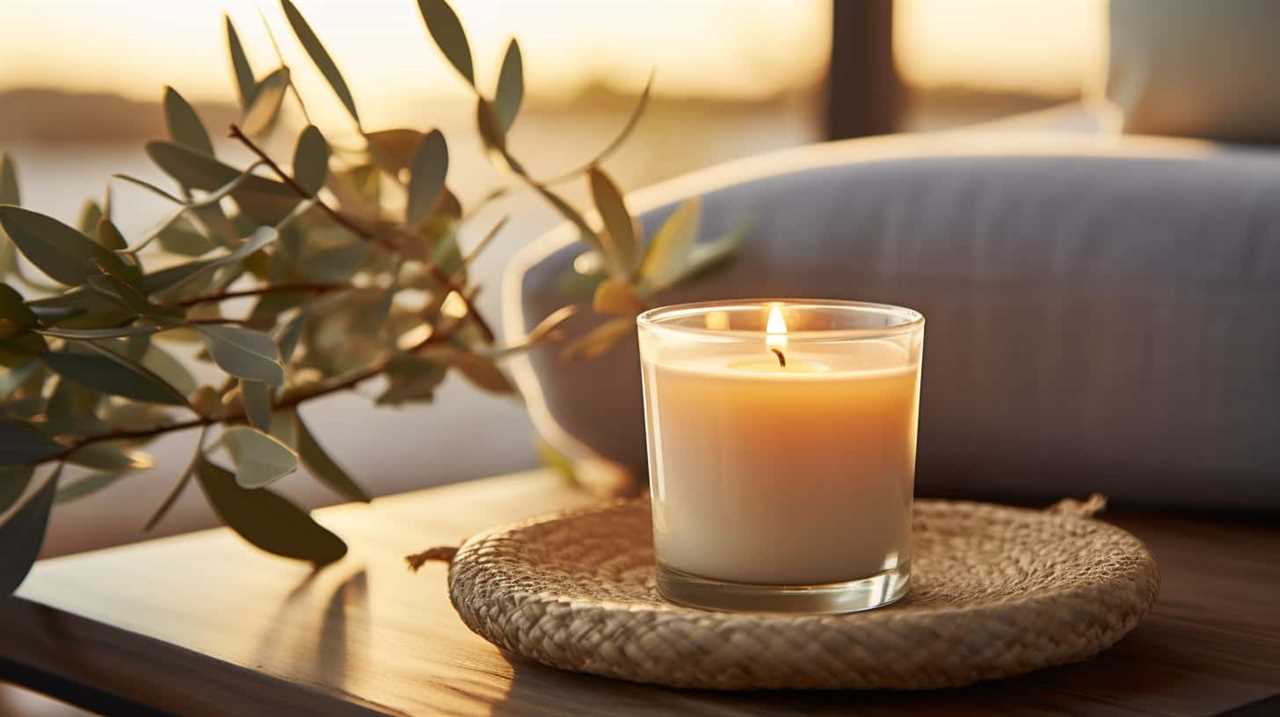
Aspiring candle makers have a promising career path ahead in this evolving industry.
My name is Jane and I absolutely adore candles. They can be found all over my house – in every room and on every surface. I am drawn to the delightful scent of candles and how they create a warm and cozy atmosphere.
Candles hold a special place in my heart. They help me unwind and destress after a tiring day. They evoke joyful memories and bring me a sense of tranquility and serenity. I truly cannot picture my life without candles!
Candles
How to Make a Unity Candle

Are you ready to embark on the journey of crafting a beautiful unity candle? Join us as we guide you through each step in designing your own unique symbol of love and unity.
In this guide, we will take you step by step, sharing our expertise and techniques for creating a masterpiece that will be the highlight of your wedding ceremony.
With our easy-to-follow instructions and helpful tips, you’ll learn how to gather the necessary materials, choose a design that reflects your unique style, and prepare the candle containers.
So, let’s dive in and start making memories that will last a lifetime with our guide on how to make a unity candle.
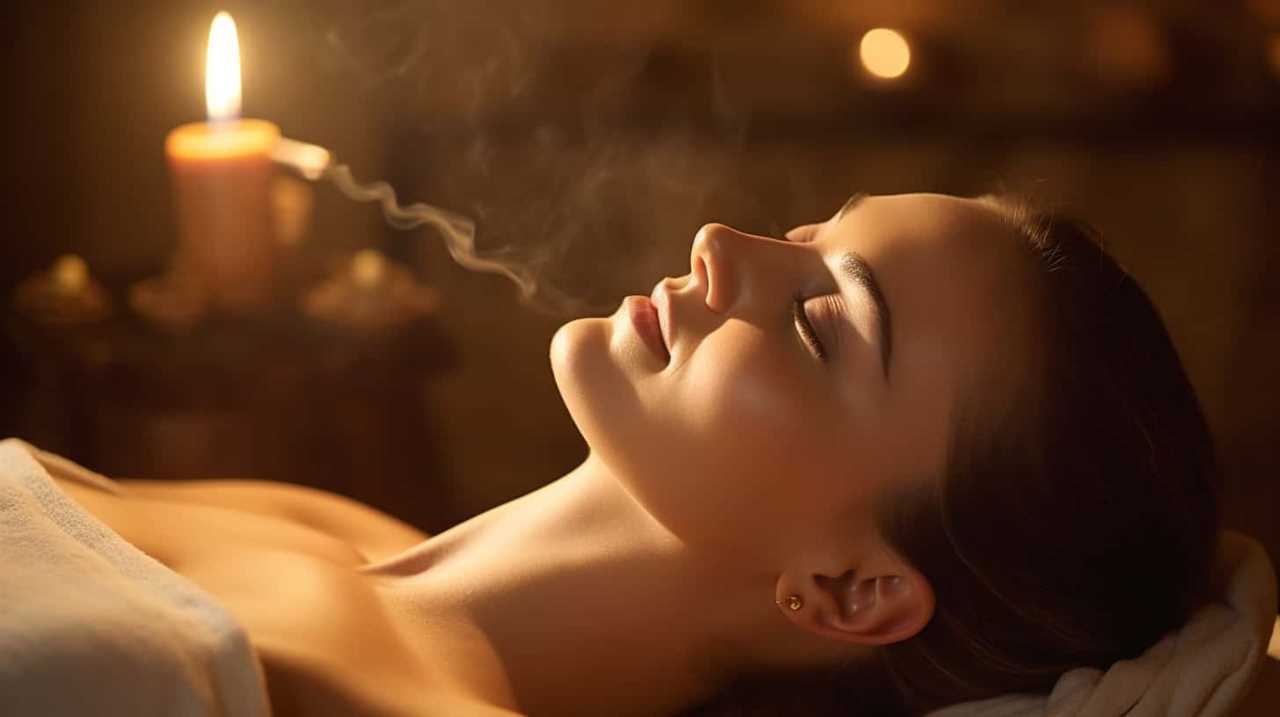
Key Takeaways
- The unity candle symbolizes the merging of two lives into one.
- Customizing the design of the unity candle allows for personal expression and reflection of shared interests.
- Selecting the perfect wax is crucial for creating a high-quality unity candle.
- Adding fragrance and color to the unity candle can enhance its aesthetic appeal and complement the wedding theme.
Gather Your Materials
To begin making a unity candle, we need to gather all of our materials.
The materials needed for creating a unity candle are simple yet significant. First and foremost, we require two taper candles, one for the bride and one for the groom, symbolizing their individuality.
Next, we need a larger pillar candle, representing the unity of their lives coming together. Additionally, we’ll need candleholders or stands to keep the candles secure during the ceremony.
It’s essential to choose candles and holders that reflect the couple’s personal style and preferences, as they’ll become a cherished keepsake.

The unity candle symbolizes the merging of two lives into one and holds immense meaning in wedding ceremonies.
Choose a Design for Your Unity Candle
Now that we’ve gathered our materials, let’s decide on a design for our unity candle.
The design of a unity candle can vary greatly, allowing couples to express their individuality and personal style. Here are some popular unity candle designs to consider:
- Classic Design:
- This design features a simple, elegant candle with the couple’s names and wedding date engraved on it.
- It symbolizes the unity and commitment of the couple, with the flame representing the eternal bond they’re creating.
- Customized Design:
- Couples can opt for a customized design that reflects their shared interests, hobbies, or cultural backgrounds.
- They can incorporate symbols, images, or colors that hold personal significance, making the unity candle truly unique and meaningful.
Prepare the Candle Containers
After choosing the design for our unity candle, we need to prepare the candle containers. This step is crucial to ensure that the candle decoration is well-executed and the personalized unity candle looks flawless.
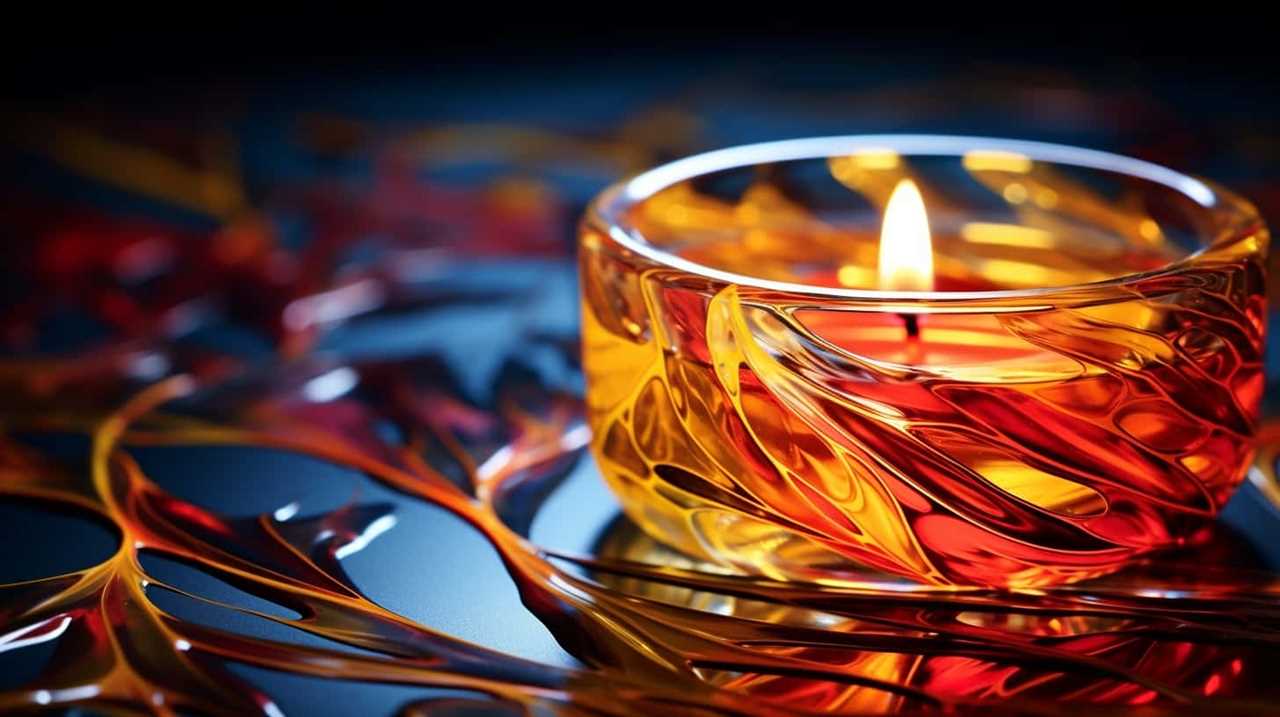
First, we should select containers that are suitable for holding the candles securely and allowing them to burn evenly. Glass containers are commonly used for unity candles due to their heat resistance and elegant appearance.
Next, we should clean the containers thoroughly to remove any dust or debris that could interfere with the candle’s presentation.
Additionally, consider adding a personal touch by decorating the containers with ribbons, flowers, or other embellishments that complement the overall design.
Select the Perfect Wax for Your Candle
Once we’ve prepared the candle containers, the next step is to select the perfect wax for our unity candle. When it comes to candle waxes, there are several types to choose from, each with its own unique characteristics. To help you make an informed decision, here are two sub-lists that outline the different types of candle waxes and the benefits of soy wax:
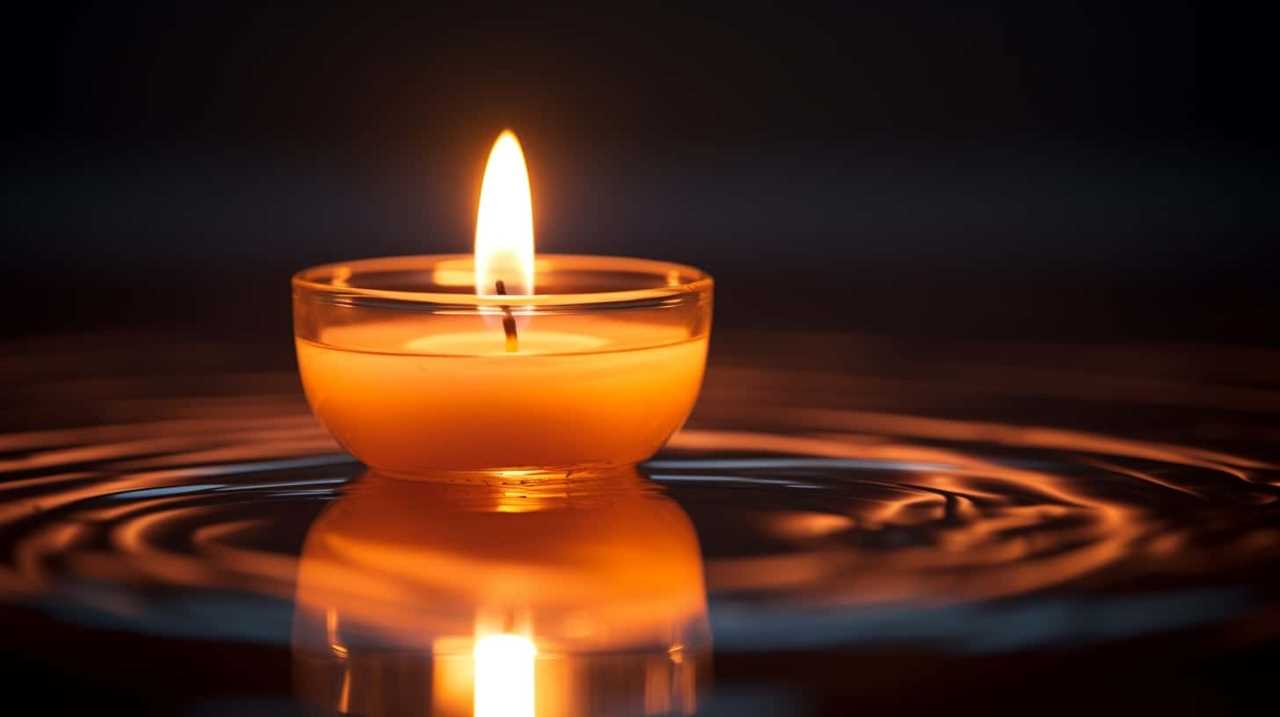
Types of Candle Waxes:
- Paraffin wax
- Beeswax
- Soy wax
- Coconut wax
- Palm wax
Benefits of Soy Wax:
- Eco-friendly and renewable
- Burns cleaner and longer
- Produces less soot and toxins
- Has a lower melting point, making it safer to handle
- Holds fragrance and color well
Add Fragrance and Color to Your Candle
To enhance our unity candle, we’ll add fragrance and color using a variety of options.
When it comes to fragrance, there are numerous options to choose from. You can opt for essential oils, such as lavender or eucalyptus, which not only provide a pleasant scent but also offer therapeutic benefits. Alternatively, you could go for fragrance oils, which come in a wide range of scents, allowing you to find the perfect aroma to complement your ceremony.
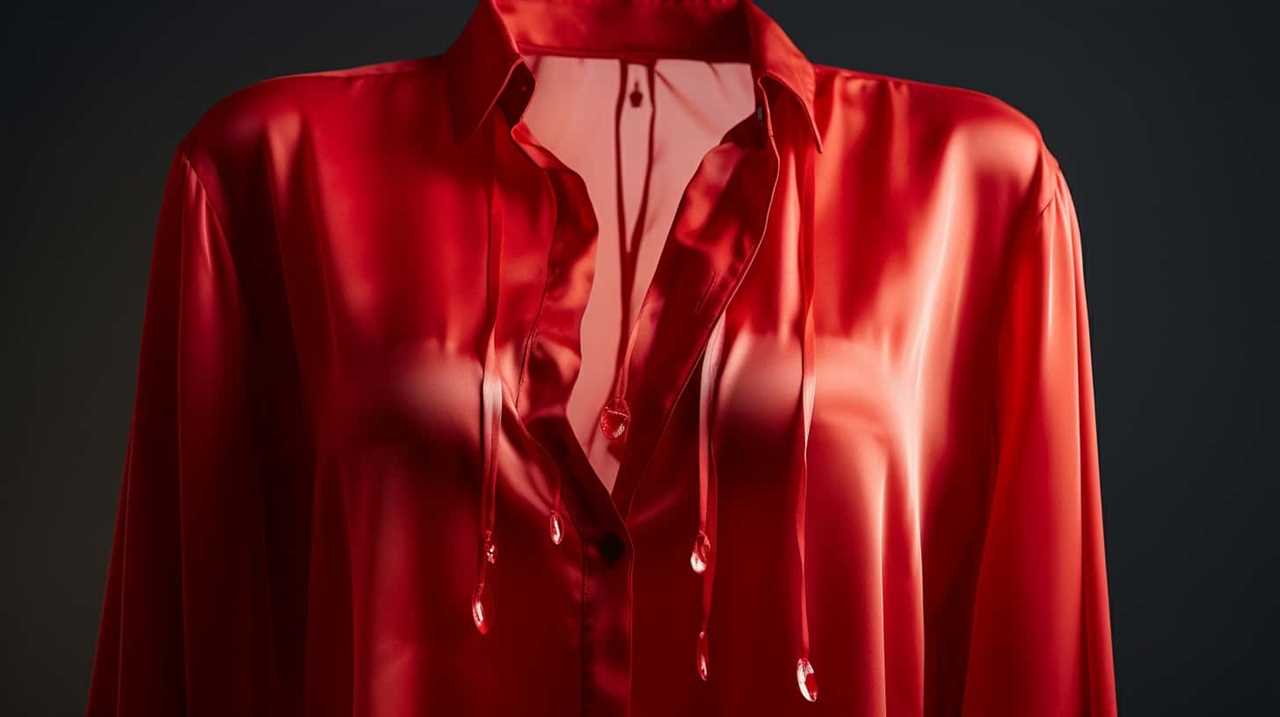
As for color choices, you can use either liquid dyes or color blocks specifically designed for candle making. These options offer a vast array of vibrant and subtle hues, enabling you to customize your unity candle to match your wedding theme or personal preference.
Now that we’ve selected our fragrance and color, it’s time to move on to the next step: melting and pouring the wax into the containers.
Melt and Pour the Wax Into the Containers
Now that we’ve added fragrance and color to our candle, it’s time to move on to the next step: melting and pouring the wax into the containers.
Safety precautions are crucial during this process, as melting wax can be dangerous. Once we’ve ensured our safety measures, we can proceed with pouring the melted wax into our containers, taking care to decorate the unity candle to our liking.
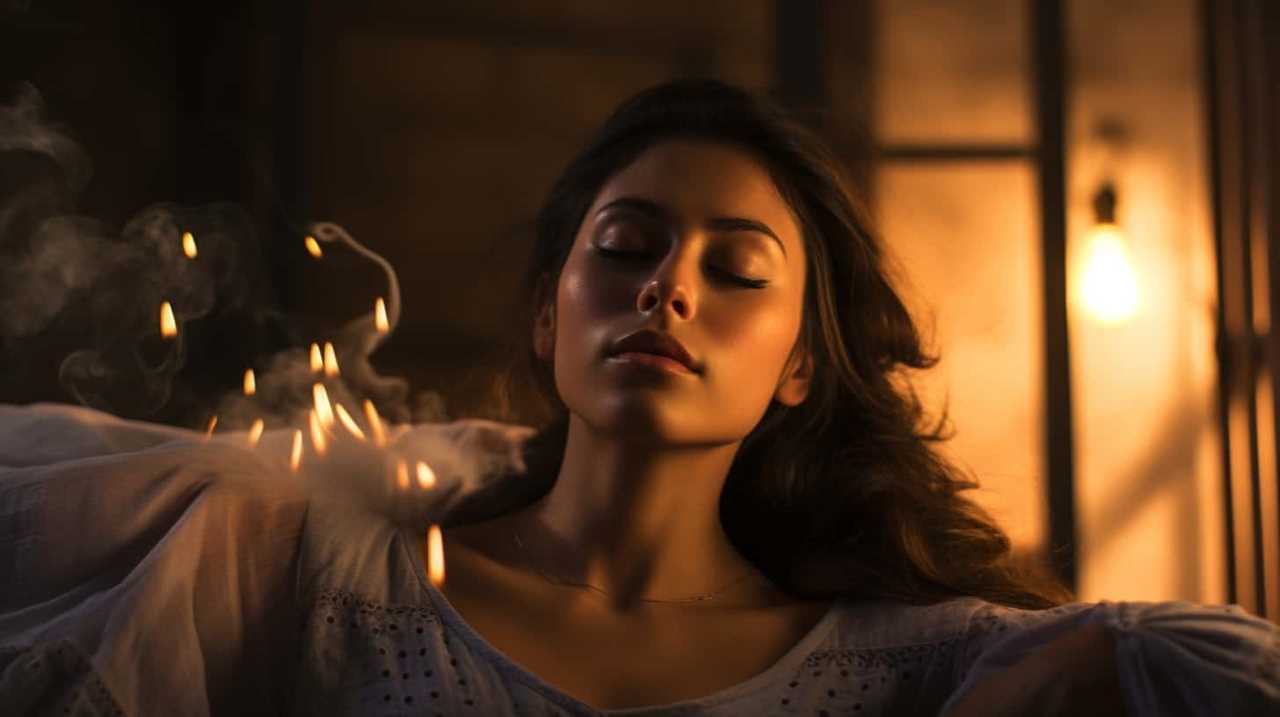
Safety Precautions for Melting Wax
We always prioritize safety when melting the wax and pouring it into the containers. Here are some important safety precautions to keep in mind:
Wax melting techniques:
- Use a double boiler or a wax melting pot to ensure even heat distribution and prevent the wax from overheating or catching fire.
- Stir the wax gently and consistently to avoid hot spots and promote uniform melting.
Proper ventilation while melting wax:
- Choose a well-ventilated area to melt the wax, preferably near an open window or with a fan running, to prevent the accumulation of harmful fumes.
- If working in a small space, consider using a fume hood or wearing a respiratory mask to protect yourself from inhaling the vapors.
Decorating the Unity Candle
After ensuring the safety precautions for melting wax have been followed, it’s time for us to decorate our unity candle by melting and pouring the wax into the containers. This step is crucial in creating a beautiful and personalized unity candle for your ceremony.
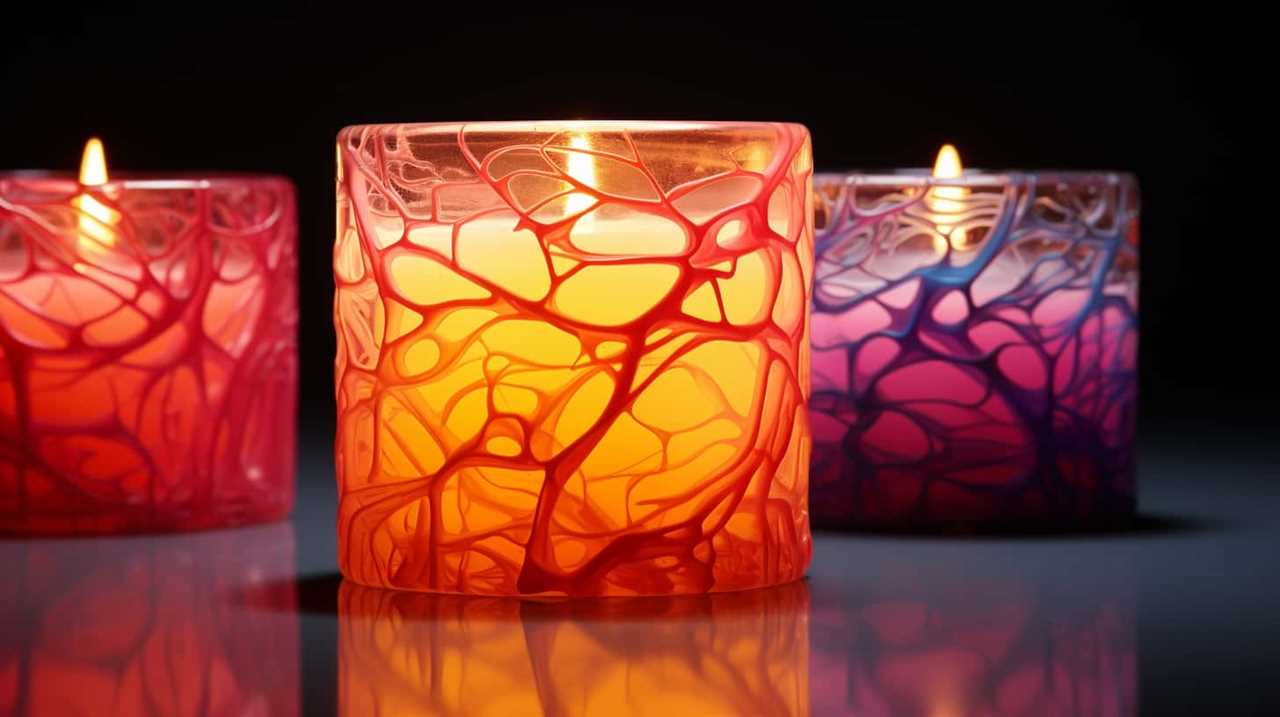
To begin, gather your containers and place them on a heat-resistant surface. Next, melt the wax using a double boiler or a melting pot specifically designed for candle making. Be sure to stir the wax gently and consistently to prevent air bubbles from forming.
Once the wax has reached the desired temperature, carefully pour it into the containers, taking care not to spill or overflow. This is a great opportunity to get creative and add unique touches to your unity candle. Consider adding dried flowers, ribbons, or even personalized decals to make it truly special.
With the wax poured, it’s time to move on to the next step: inserting the wicks and letting the candles cool.
Insert the Wicks and Let the Candles Cool
To begin, it’s important to insert the wicks into the candles and allow them to cool. This step is crucial in candle making techniques as it ensures that the wicks are securely in place and the candles set properly. Here are some key points to keep in mind during this process:
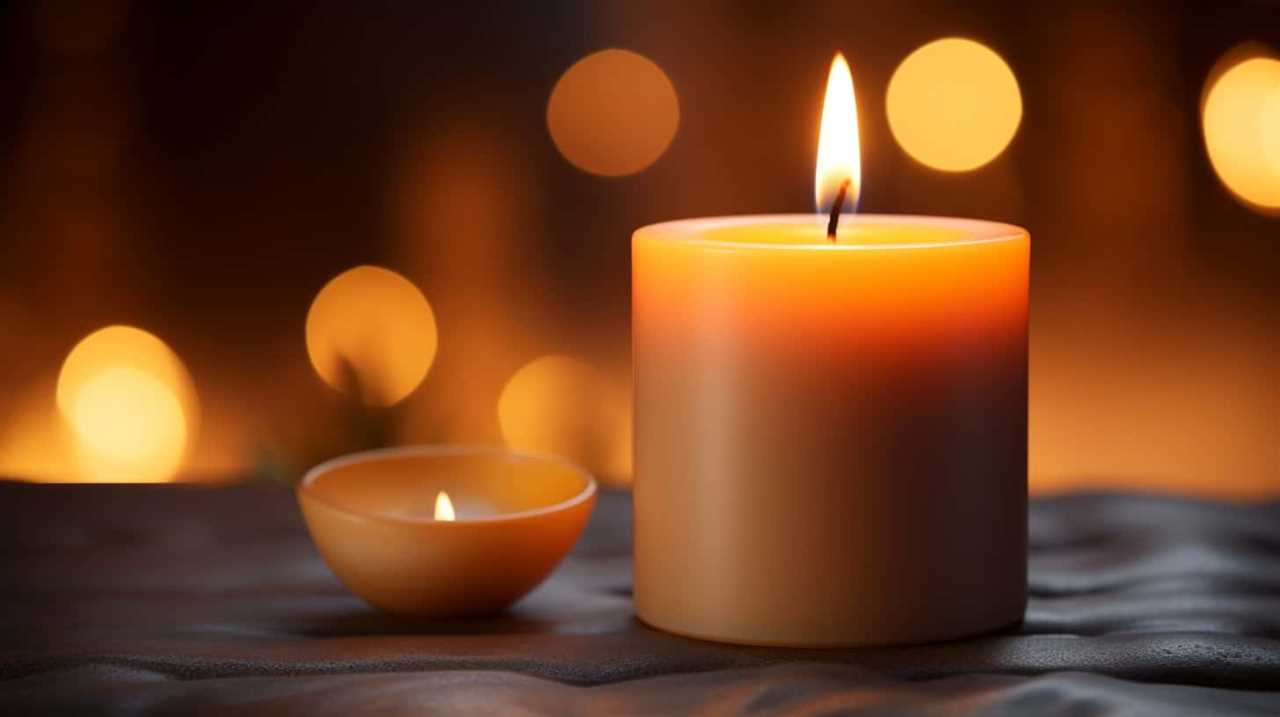
- Choose the right wicks: Select wicks that are appropriate for the size and type of candles you’re making. There are various wick sizes and materials available, such as cotton or wooden wicks, to suit different candle designs.
- Insert the wicks correctly: Place the wicks at the center of each candle, making sure they’re straight and secure. You can use a wick holder or simply hold the wick in place until the wax cools.
After inserting the wicks, it’s essential to let the candles cool completely. This allows the wax to solidify and ensures that the wicks remain centered. Once the candles have cooled, you can move on to the next step of decorating your unity candle, where you can unleash your creativity and explore alternative unity candle ideas.
[Transition sentence]: Now that the wicks are inserted and the candles have cooled, it’s time to let your imagination run wild and decorate your unity candle.
Decorate Your Unity Candle
Now that we’ve inserted the wicks and allowed the candles to cool, let’s unleash our creativity and decorate our unity candle.
Decorating the unity candle is an opportunity to add personal touches and symbolism to your wedding ceremony. The unity candle holds immense significance as it represents the joining of two individuals and families.
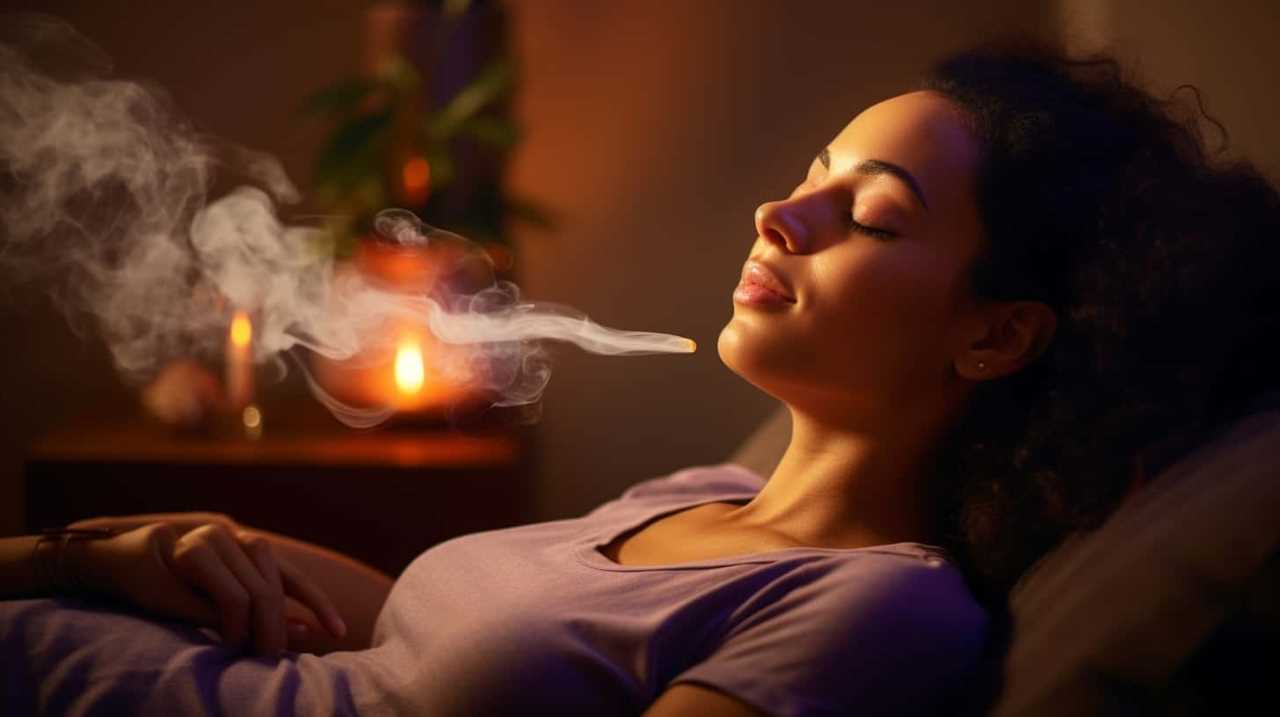
To enhance the symbolism, you can incorporate elements such as ribbons, charms, or engraved names and dates. Consider using colors that hold special meaning to you and your partner.
Alternatively, you can explore alternative unity candle ideas, such as using different-sized candles to represent each partner and their families, or even creating a custom-designed unity candle that reflects your unique style.
Light the Unity Candle in Your Wedding Ceremony
To continue with the ceremony, we light the unity candle, symbolizing the union of two individuals and families. Lighting the unity candle is a significant moment in a wedding ceremony, representing the coming together of two lives.
Here are some lighting techniques and the symbolism behind the unity candle:
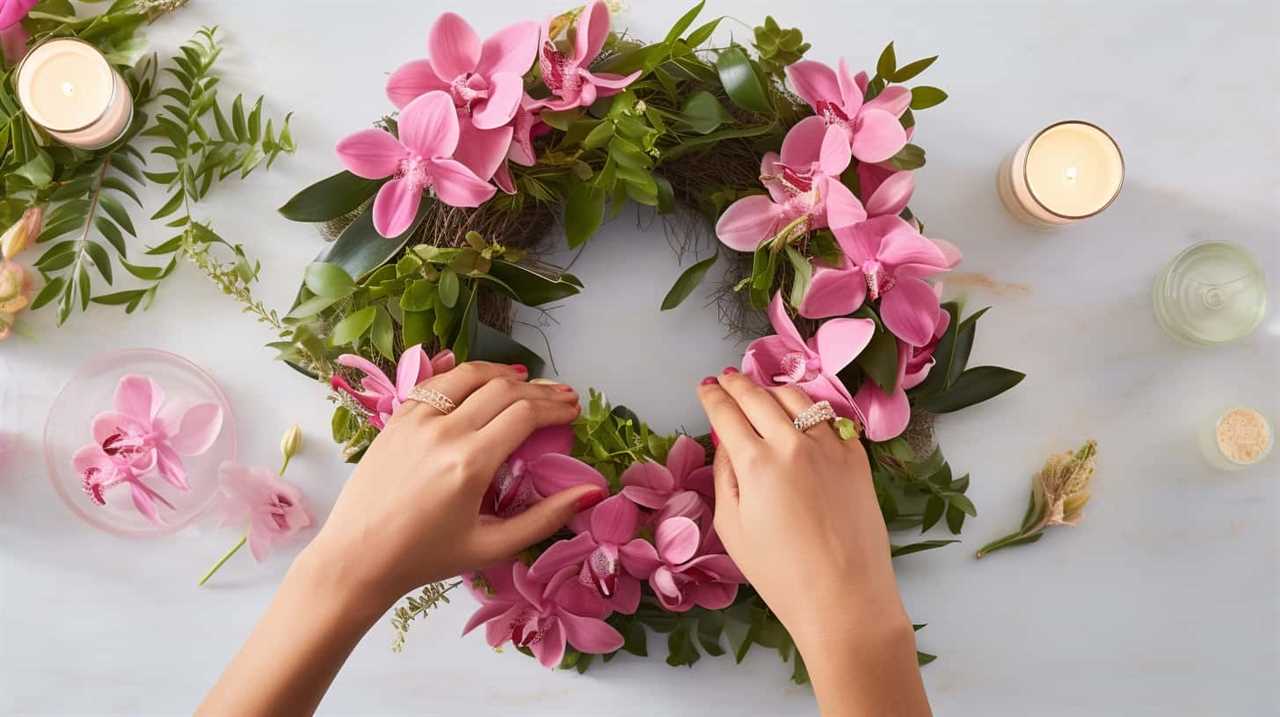
- Lighting Techniques:
- The traditional method involves the bride and groom each taking a lit taper candle and simultaneously lighting the larger unity candle together.
- Another option is to have the parents of the couple light the taper candles, symbolizing the support and love from both families.
- Symbolism of the Unity Candle:
- The two taper candles represent the separate lives of the bride and groom.
- The larger unity candle represents their new life together as one.
- As the couple lights the unity candle, it signifies their commitment to each other and the merging of their families.
Frequently Asked Questions
How Long Does It Take for the Candles to Cool After Pouring the Wax?
After pouring the wax, the candles need about 2-3 hours to cool completely. To ensure the best results, use a high-quality wax specifically designed for unity candles, as it will have a longer cooling time.
Can I Use Scented Wax for the Unity Candle?
Using scented wax for the unity candle can add a delightful fragrance to your ceremony. However, it’s important to consider the pros and cons. Alternatively, you can explore other ways to add fragrance.
What Kind of Wicks Should I Use for the Unity Candle?
When making a unity candle, it’s important to choose the right kind of wicks. We recommend using cotton wicks, as they are the most reliable and give a clean, even burn.
Can I Use a Different Type of Container for the Unity Candle?
Using alternative materials for the unity candle allows for endless creativity. Whether it’s a unique container or personalized decorations, the possibilities are exciting. With careful attention to detail, the unity candle can become a true masterpiece.
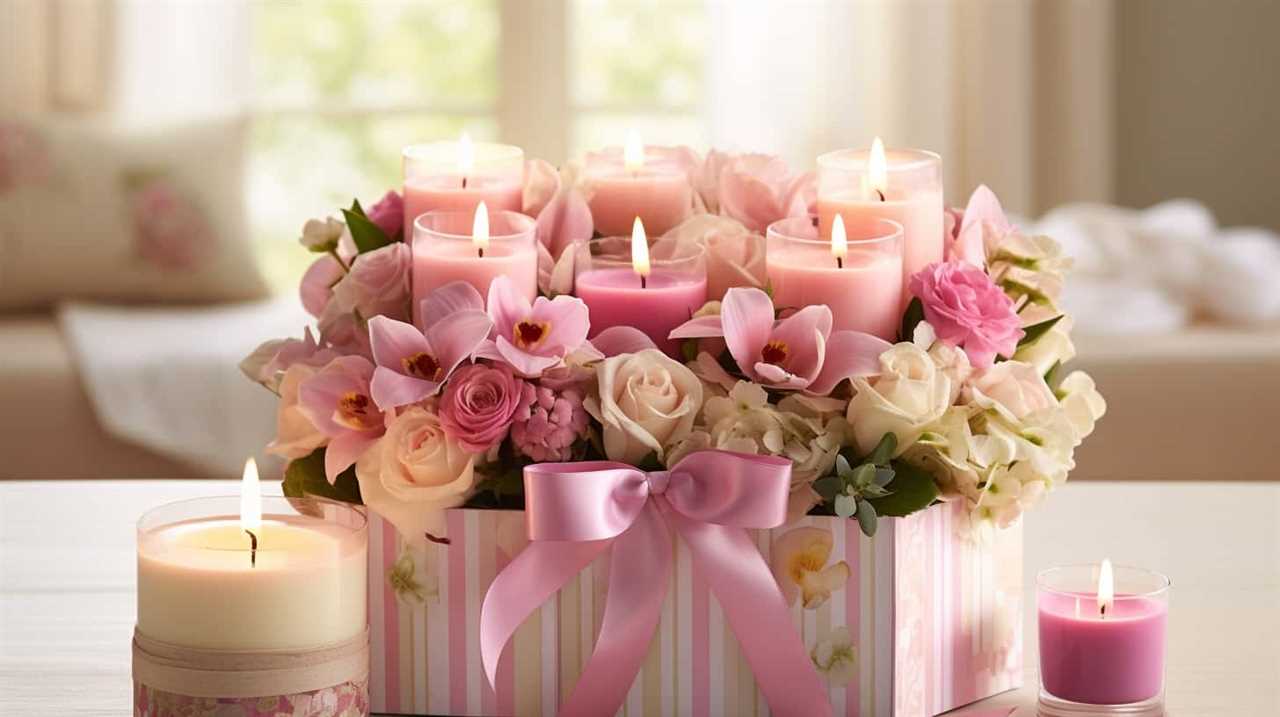
How Long Does the Unity Candle Typically Burn During a Wedding Ceremony?
During a wedding ceremony, the unity candle typically burns for around 5-10 minutes. It symbolizes the joining of two families and the unity of the couple. Alternatives to the unity candle include sand ceremonies or handfasting rituals.
Conclusion
In conclusion, creating a captivating unity candle for your wedding ceremony is an artful and aromatic endeavor. By gathering the necessary materials, choosing a design, and carefully preparing the containers, you can craft a candle that symbolizes the union of two souls.
With the perfect wax, fragrance, and color, your candle will radiate beauty and significance. So, immerse yourself in the process, ignite your creativity, and let the flickering flames of your unity candle illuminate your love story.
My name is Jane and I absolutely adore candles. They can be found all over my house – in every room and on every surface. I am drawn to the delightful scent of candles and how they create a warm and cozy atmosphere.
Candles hold a special place in my heart. They help me unwind and destress after a tiring day. They evoke joyful memories and bring me a sense of tranquility and serenity. I truly cannot picture my life without candles!
Candles
How to Make a Wickless Candle

Are you interested in creating a candle without a wick? Look no further! This step-by-step tutorial will guide you through the process of crafting a wickless candle.
By following our expert instructions, you will master the art of crafting these unique candles in no time. We will guide you through the process, from gathering the necessary supplies to decorating your finished creation.
Our language is tailored for those seeking mastery in candle making, providing you with the knowledge and skills to create beautiful wickless candles.
So, let’s get started on this exciting journey and discover the secret behind making your very own wickless candle!
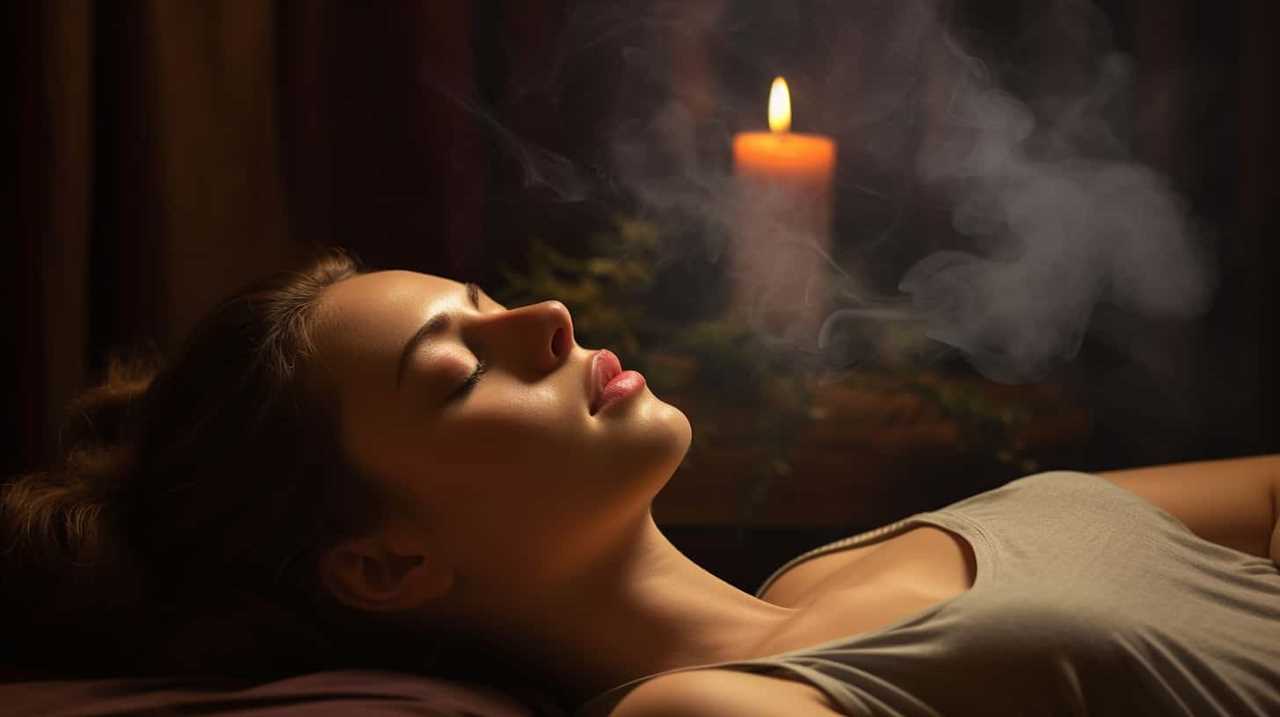
Key Takeaways
- Choose the right wax by considering options like soy, beeswax, paraffin, and coconut wax
- Consider the benefits of each wax, such as affordability, scent throw, burn time, and toxicity levels
- Select a suitable container based on size, material, burn time, and the purpose of the candle
- Explore different ways to decorate the candle, including ribbons, labels, dried flowers, and unique designs
Gather Your Supplies
To start making a wickless candle, we need to gather our supplies.
First, we must consider our container options. Glass jars or heat-resistant containers are ideal for holding the melted wax. Make sure the container is clean and free from any debris.
Next, we need to gather the ingredients for the melting process. We’ll need soy wax flakes, fragrance oils, and dye if desired. Additionally, we’ll need a double boiler or a heat-resistant container and a heat source, such as a stove or a hot plate. It’s important to have a thermometer to monitor the temperature of the wax.
Lastly, don’t forget about the tools like a whisk or a stirrer, a scale for measuring the wax, and a pouring pitcher for easy pouring.
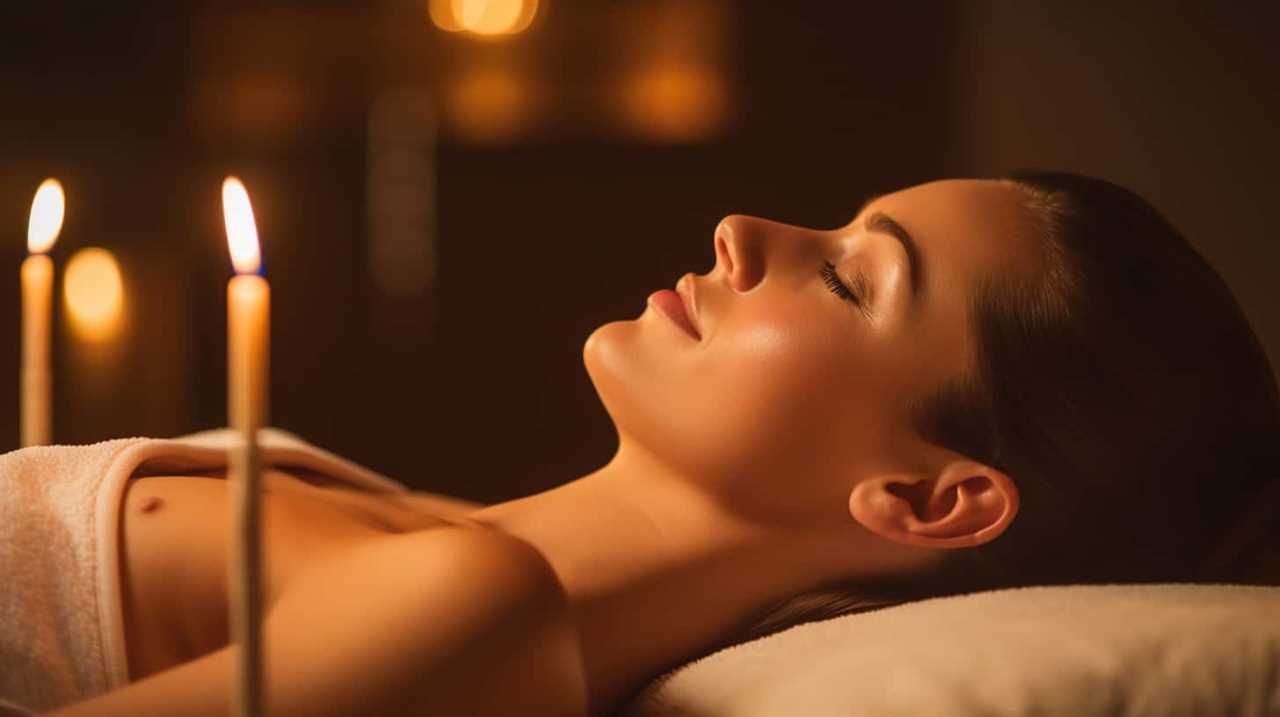
With these supplies ready, we can move on to the next step of making our wickless candle.
Choose Your Wax
Now that we’ve gathered our supplies, we need to choose the right wax for our wickless candle.
There are several options available, such as soy, beeswax, paraffin, and coconut wax. Each type of wax has its own benefits and characteristics, so it’s important to consider these factors before making a decision.
Let’s explore the properties of each wax and how they can affect the overall quality of our candle.

Soy or Beeswax
We prefer using soy or beeswax as our wax choice when making a wickless candle. Both soy and beeswax have their own benefits and uses, so it ultimately comes down to personal preference. To help you decide, here is a comparison and cost analysis of the two options:
| Wax Type | Benefits and Uses | Cost |
|---|---|---|
| Soy | – Natural and renewable material |
- Burns longer and cleaner
- Releases fragrance well
- Easy to work with | Generally more affordable than beeswax |
| Beeswax | – Natural and sustainable - Burns longer and emits a warm glow
- Releases a subtle honey scent
- Purifies the air | Generally more expensive than soy |
Consider your priorities and budget when choosing between soy and beeswax for your wickless candle. Both options have their advantages, so go with the one that aligns with your needs and preferences.
Paraffin or Coconut
When considering the wax for our wickless candle, the choice between paraffin or coconut is an important decision to make. Both paraffin and coconut wax have their own unique properties and benefits. Here is a comparison to help you decide the best wickless candle wax for your needs:
- Paraffin wax:
- Made from petroleum byproducts.
- Provides a strong scent throw, filling the room with fragrance.
- Has a longer burn time compared to other waxes.
- Coconut wax:
- Made from the meat of coconuts.
- Offers a clean and natural burn.
- Produces a soft, creamy texture that’s easy to work with.
Ultimately, the choice between paraffin and coconut wax depends on your preferences and priorities. If you prioritize a strong scent throw and longer burn time, paraffin wax may be the best option for you. On the other hand, if you value a clean and natural burn, along with a soft and creamy texture, coconut wax may be the better choice.
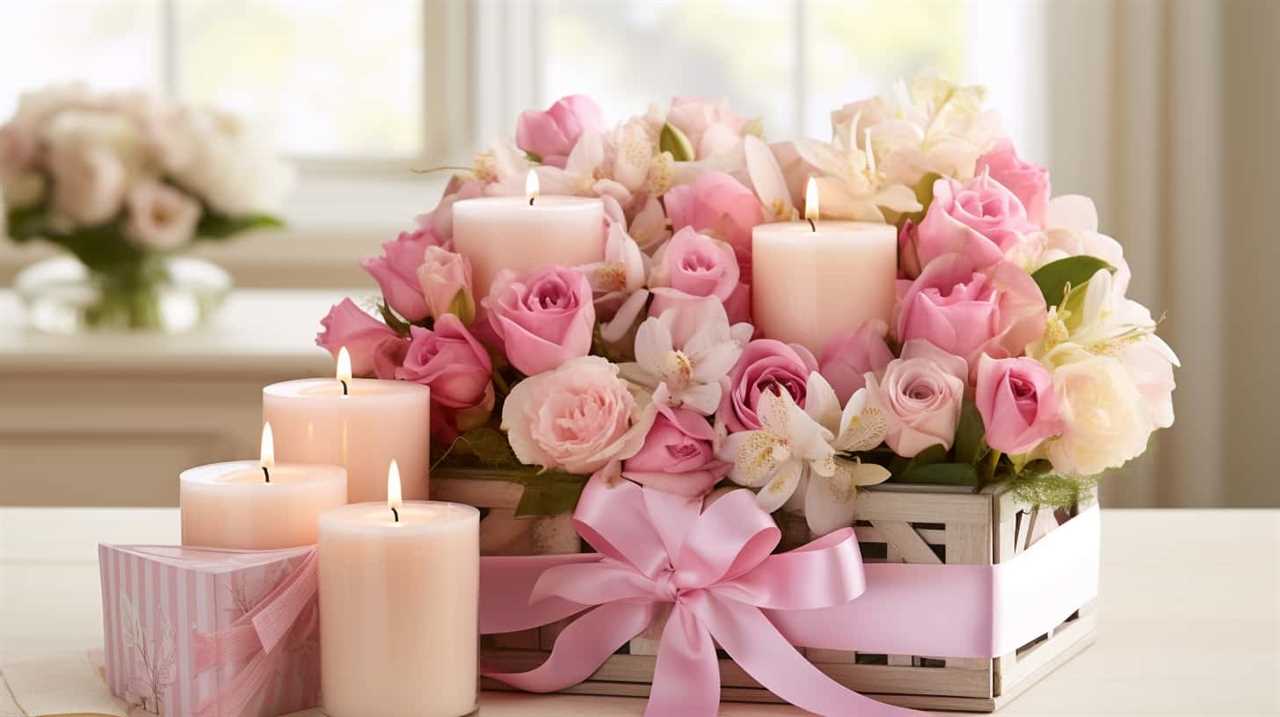
Consider your desired outcome and experiment with both to find the perfect wax for your wickless candle.
Benefits of Each
The advantages of each wax type should guide our choice when deciding between paraffin and coconut wax for our wickless candle. Understanding the benefits of wickless candles is essential in order to use them effectively.
Paraffin wax is a popular choice due to its affordability and accessibility. It has a high melting point, which means it can hold its shape well. Additionally, paraffin wax has a strong scent throw, meaning it can release fragrance effectively. However, it does produce some soot and may contain toxins.
On the other hand, coconut wax is a natural and sustainable option. It has a lower melting point, which allows for a longer burn time. Coconut wax also has a clean burn, producing minimal soot and no toxins. It has a subtle scent throw, making it perfect for those who prefer a more subtle fragrance.
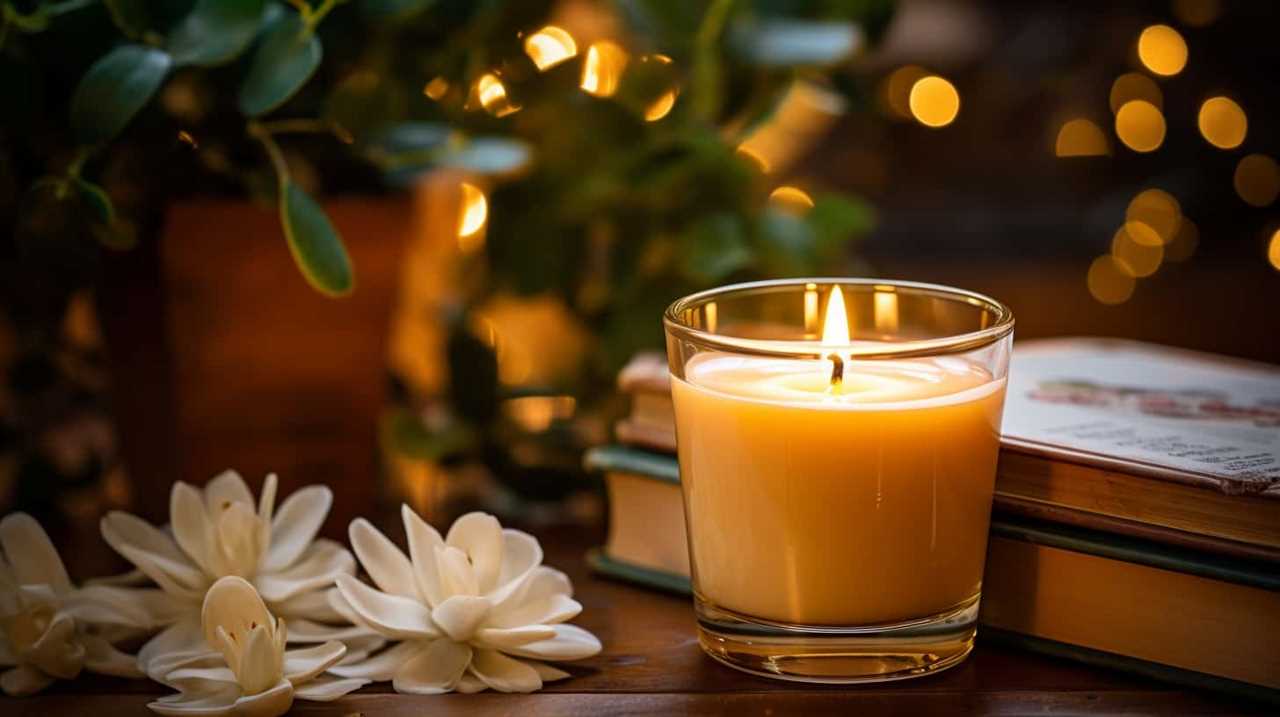
Considering these benefits, we can make an informed decision when choosing between paraffin and coconut wax for our wickless candle.
Select a Container
Now that we’ve chosen our wax, it’s time to select a container for our wickless candle.
There are a few points to consider when choosing the right container. First, think about the size options available – do you want a small, travel-sized candle or a larger one for your living room?
Next, consider the material of the container – glass, ceramic, or tin?

Lastly, let’s explore some decorative container ideas to add a personal touch to your candle-making project.
Container Size Options
We prefer using a glass jar as our container for making wickless candles. When selecting a container size, it’s important to consider the burn time of the candle. Here are three options to choose from:
- Small containers: These are great for shorter burn times, typically ranging from 10-15 hours. They’re perfect for small spaces or for trying out different scents without committing to a larger candle.
- Medium containers: These provide a longer burn time, usually lasting between 20-30 hours. They’re ideal for medium-sized rooms or for those who enjoy having a candle burning for a longer period.
- Large containers: These offer the longest burn time, lasting between 40-50 hours. They’re perfect for larger rooms or for those who prefer to have a candle burning throughout the day.
When selecting a container size, consider the space you intend to use the candle in and how long you want it to burn.
Material Considerations
For our wickless candle, we need to carefully consider the materials used for the container. Choosing the right material is crucial for both the functionality and safety of the candle.
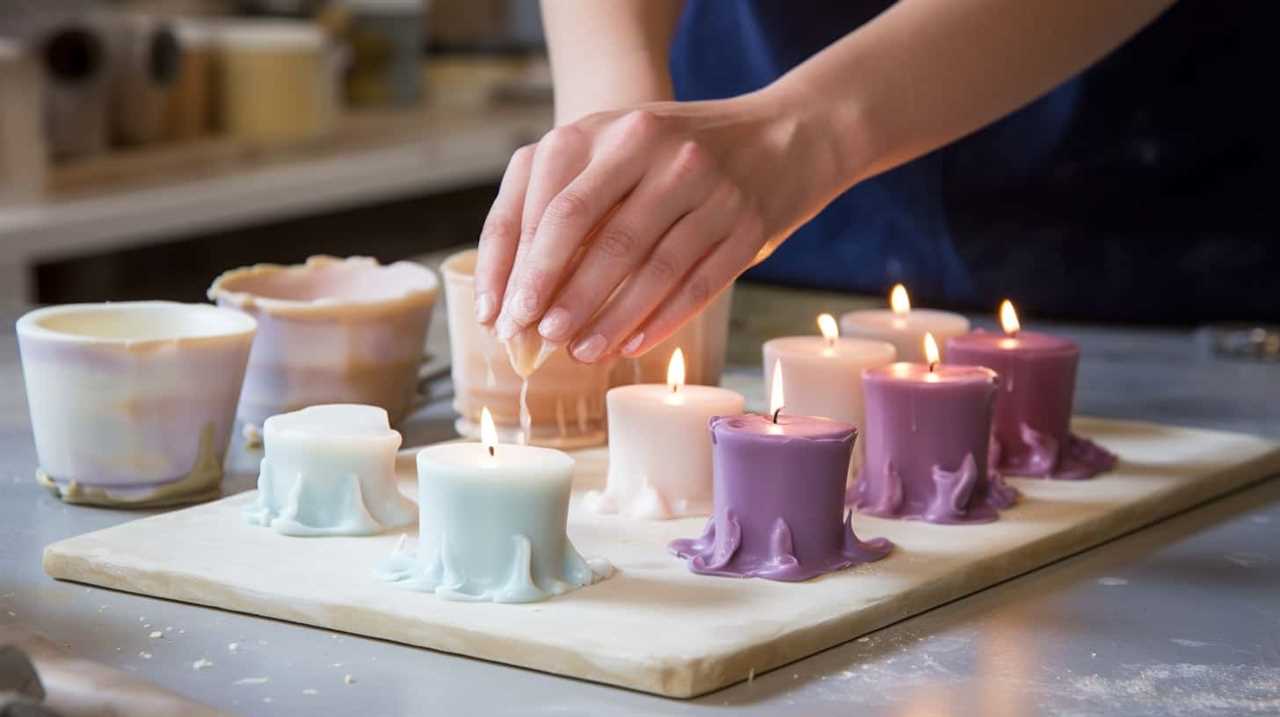
When selecting a container, it’s important to keep in mind alternative materials that can be used instead of traditional options like glass or ceramic. One alternative material that’s gaining popularity is silicone. Silicone containers are heat-resistant and can withstand high temperatures without melting or warping, making them a safe option for wickless candles.
Another alternative material to consider is stainless steel. Stainless steel containers aren’t only durable and long-lasting, but they also provide excellent heat retention, ensuring that the candle melts evenly and efficiently.
When it comes to wickless candle safety, selecting the right container material is essential for a successful and worry-free candle-making experience.
Decorative Container Ideas
When selecting a container for our wickless candle, it’s important to consider various decorative options available. Here are some ideas for decorative candle holders and repurposing household items:
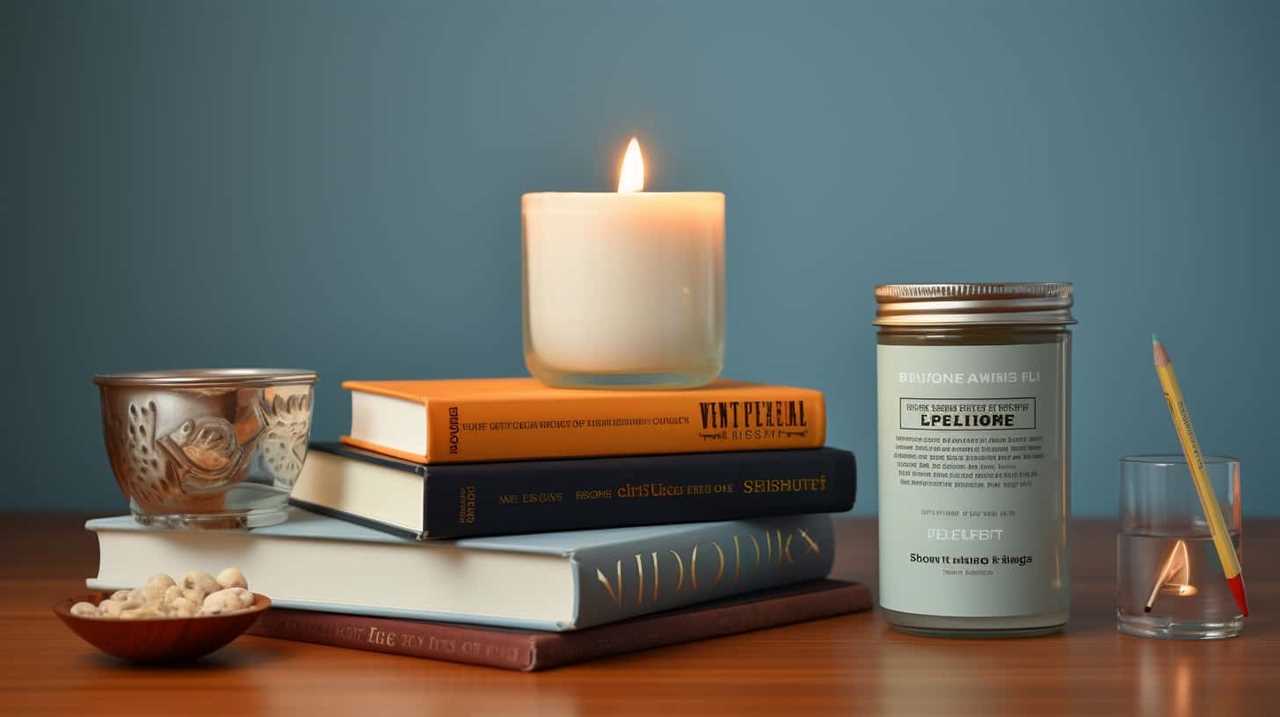
- Mason jars: These versatile containers can be found in various sizes and styles. They provide a rustic and cozy feel to your wickless candle. You can decorate them with ribbons, twine, or even paint them to match your decor.
- Teacups and saucers: Repurpose vintage teacups and saucers as unique candle holders. They add a touch of elegance and charm to any space. You can find these at thrift stores or flea markets.
- Glass bottles: Give a second life to empty glass bottles by turning them into candle holders. Remove the labels, clean them thoroughly, and insert your wickless candle. You can even add decorative elements such as beads or seashells inside the bottle for an extra touch of creativity.
Prepare the Container
To prepare the container for our wickless candle, gather all necessary materials and ensure that it’s clean and free of any debris.
First, consider the size of the container. Wickless candles can be made in various sizes, depending on your preference and the amount of wax you have. Smaller containers are perfect for a personal candle while larger ones are ideal for creating a centerpiece.
Next, think about the material of the container. Glass jars are a popular choice as they’re heat resistant and allow you to see the beautiful glow of the candle. Ceramic or metal containers can also be used, but make sure they’re heat-safe.
Once you have chosen the container, thoroughly clean it with warm soapy water to remove any dirt or dust. Dry it completely to ensure a clean surface for your wickless candle.

Melt the Wax
Now that we’ve prepared our container, it’s time to melt the wax. The temperature for melting wax should be around 180-185 degrees Fahrenheit to ensure that it melts evenly and doesn’t burn.
If you don’t have access to a stove or microwave, you can also consider using alternative wickless materials such as soy or beeswax melts, which can be melted in a wax warmer.
Temperature for Melting Wax
Our recommended temperature for melting the wax is crucial to ensure a smooth and even consistency. It’s important to note that different types of waxes have different melting points.
Here is a step-by-step guide on achieving the optimal temperature for melting your wax:
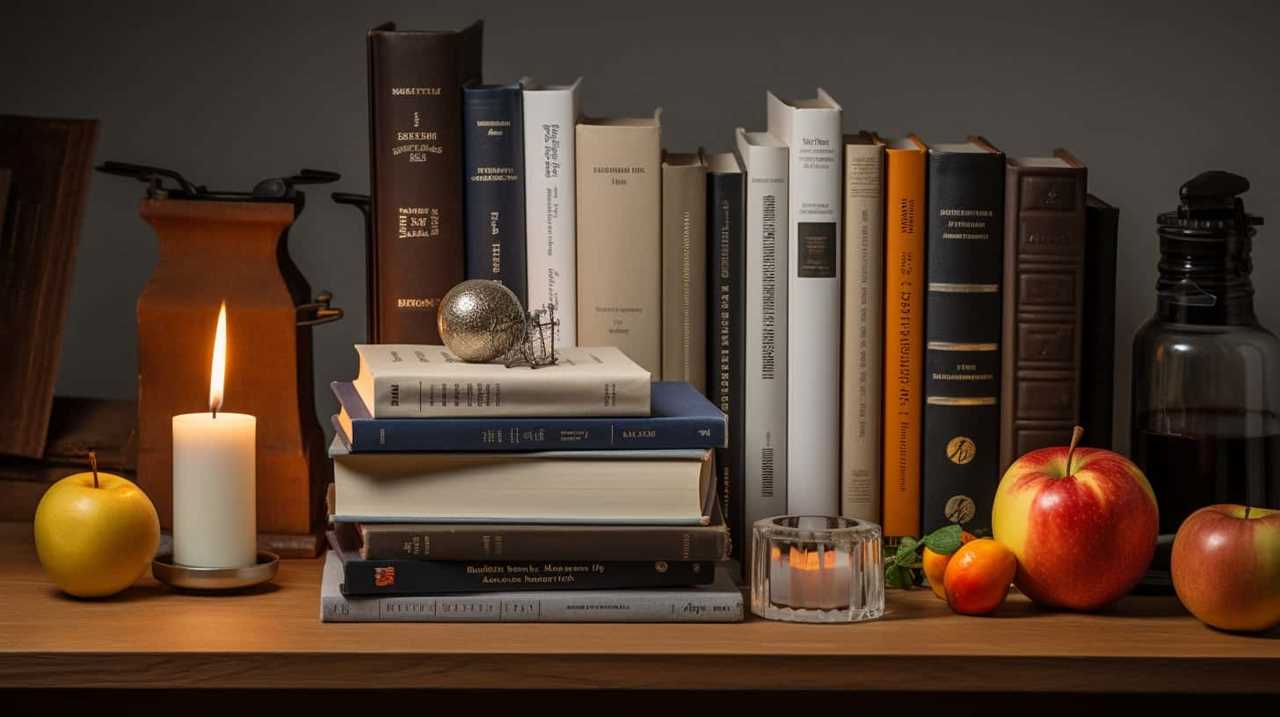
- Determine the melting point of your specific wax. This information can usually be found on the packaging or from the supplier.
- Set up a double boiler system by placing a heat-resistant container filled with wax pellets or chunks into a larger pot filled with water. This indirect method will prevent the wax from scorching.
- Heat the water on low to medium heat and monitor the temperature using a candy or candle thermometer. Aim for a temperature that’s just above the melting point of your wax, usually between 160°F to 180°F (71°C to 82°C).
Alternative Wickless Materials
After determining the optimal temperature for melting the wax, we frequently use alternative wickless materials to achieve the desired consistency. These alternative materials provide different options for making wickless candles, allowing for creative experimentation and customization.
One popular alternative material is soy wax, which is derived from soybean oil and has a lower melting point than traditional candle wax. Soy wax is known for its clean burn and longer-lasting scent.
Another option is beeswax, which has a natural honey scent and a higher melting point. Beeswax is often used for its eco-friendly properties and ability to purify the air.
Lastly, coconut oil can be used as an alternative wickless material. It has a low melting point and provides a smooth and creamy texture to the candle.
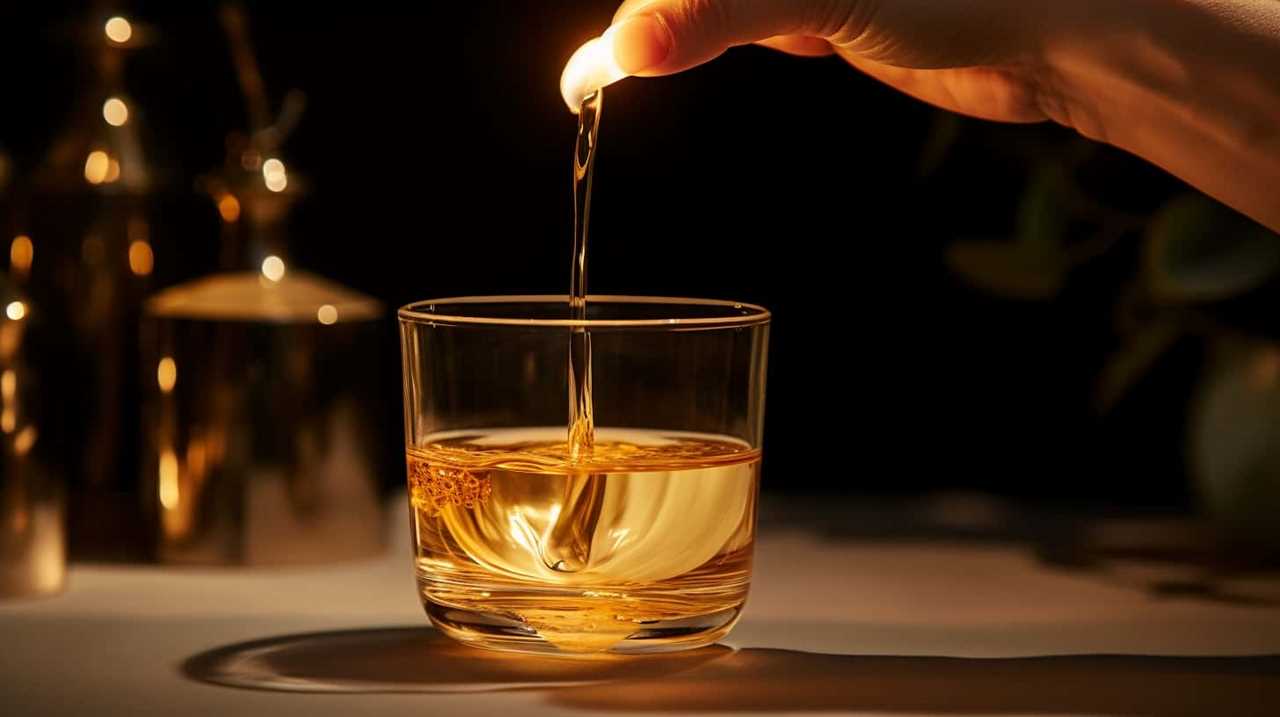
These alternative materials give you the flexibility to create unique wickless candles with different scents and textures.
Add Fragrance and Color
We enhance the wickless candle by adding fragrance and color. Here’s how to do it:
- Fragrance Selection:
- Choose high-quality fragrance oils specifically designed for candles.
- Consider the scent’s strength and how it complements the purpose of your candle.
- Experiment with different combinations to create unique aromas.
- Color Combinations:
- Use candle dye chips or liquid candle dyes for coloring.
- Start with small amounts and gradually add more until you achieve the desired shade.
- Mix different colors to create custom shades or use pre-made color combinations.
Adding fragrance and color to your wickless candle enhances its appeal and creates a more enjoyable experience. Remember to test your fragrance and color combinations beforehand to ensure the desired results.
Pour the Wax Into the Container
To complete the process, the wax is poured into the container. Pouring the wax is a crucial step in creating a wickless candle, as it ensures that the wax is evenly distributed and properly sets in the container.

There are different methods you can use to pour the wax into the container, depending on your preference and the desired outcome. One method is to slowly pour the melted wax from the pouring pitcher into the container, making sure to leave some space at the top for the fragrance. Another method is to use a ladle or a spoon to carefully transfer the melted wax into the container.
Whichever method you choose, make sure to pour the wax slowly and steadily to avoid any spills or uneven distribution.
Once the wax is poured, it’s time to let it cool and harden, which we’ll discuss in the next section.
Let the Wax Cool and Harden
Once the wax has been poured into the container, we need to allow it to cool and harden. This step is crucial to ensure that our wickless candle sets properly and provides the desired benefits.
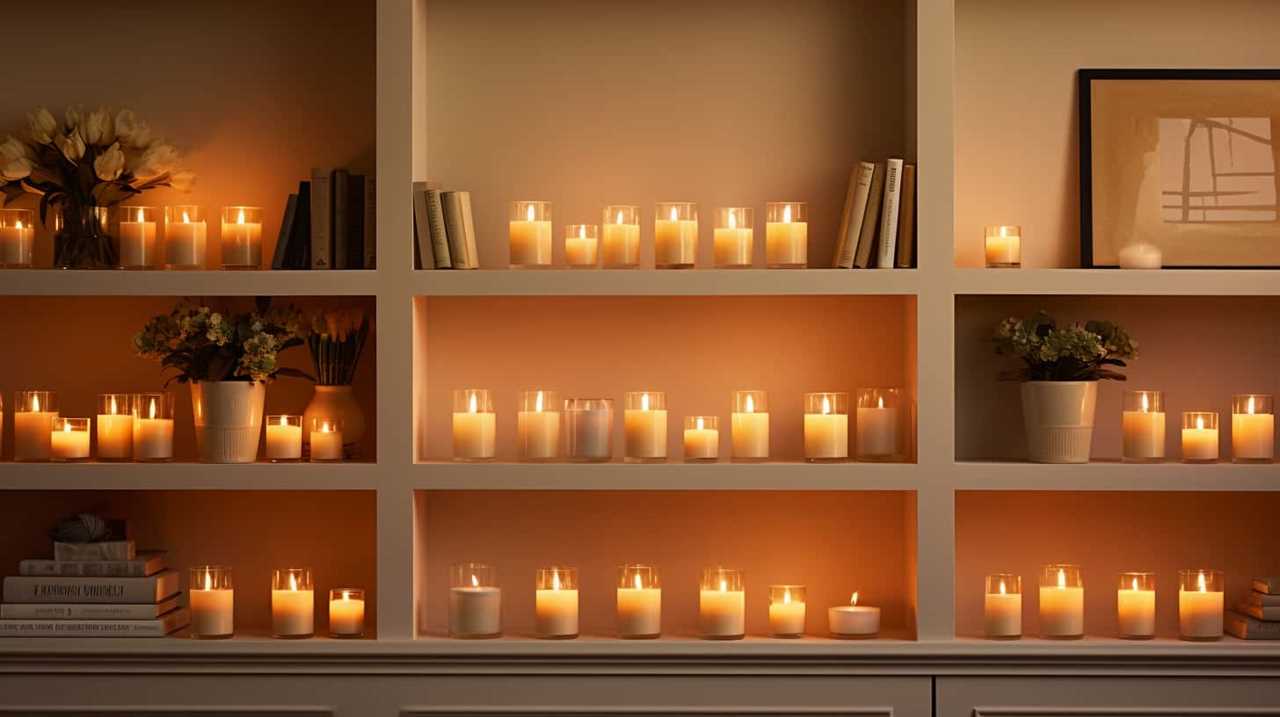
Here are some tips for cooling and hardening the wax:
- Patience is key: It’s important to resist the temptation to touch or move the container while the wax is cooling. This can disrupt the process and result in an uneven surface.
- Room temperature matters: Find a cool and undisturbed area in your home where the candle can be left to cool. Avoid placing it near drafts or direct sunlight, as these can affect the cooling process.
- Give it time: Depending on the size of your candle, it may take several hours or even overnight for the wax to completely cool and harden. Be patient and allow sufficient time for the process to complete.
Trim the Excess Wax
After the wax has cooled and hardened, we can proceed to trim the excess wax. Trimming the excess wax is an important step to ensure that our wickless candle looks neat and professional. To do this, we will need a sharp knife or a wick trimmer. Gently hold the candle and start trimming the excess wax around the edges. Be careful not to cut too deep or damage the candle. As you trim, you can collect the excess wax and use it for future candle making projects. Once you are satisfied with the shape and appearance of your candle, wipe off any wax residue with a clean cloth. Now, our wickless candle is ready to be displayed or gifted to someone special.
| Alternatives to Wickless Candles | Techniques for Trimming Excess Wax |
|---|---|
| Battery-operated candles | Use a sharp knife or wick trimmer |
| Flameless LED candles | Trim excess wax around the edges |
| Wax melts | Be careful not to cut too deep |
| Reed diffusers | Collect excess wax for future use |
| Scented plugins | Wipe off any wax residue with a cloth |
Decorate Your Wickless Candle
How can we creatively enhance the appearance of our wickless candle?
Decorating your wickless candle can make it truly unique and eye-catching. Here are some ideas to get you started:
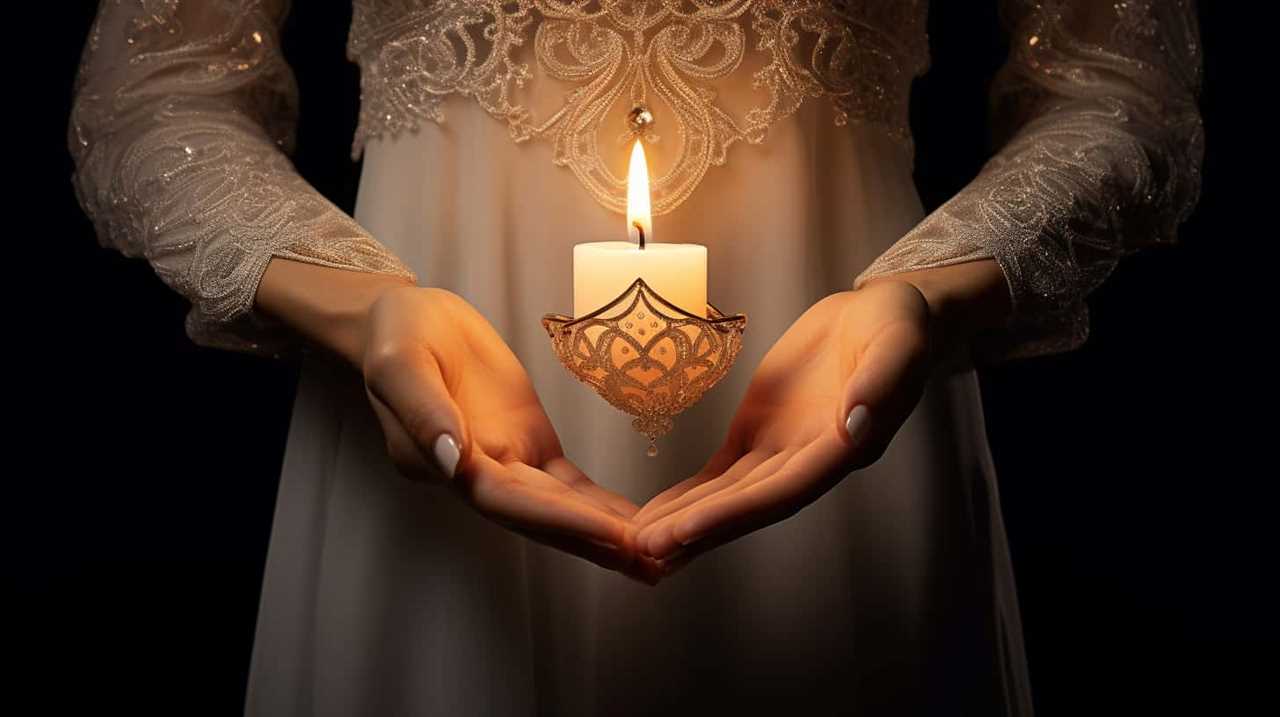
- Different types of decorative materials for wickless candles:
- Gemstones: Add a touch of elegance and sparkle by gluing gemstones onto the outside of your candle.
- Ribbons and bows: Wrap a colorful ribbon around the base of the candle or tie a bow on top for a charming look.
- Dried flowers: Press dried flowers onto the surface of the candle using a heat-resistant adhesive.
- Techniques for creating unique designs on wickless candles:
- Wax carving: Use a heated tool to carve intricate patterns, symbols, or words directly onto the surface of the candle.
- Decoupage: Cut out decorative paper or fabric and adhere it to the candle using decoupage glue for a personalized design.
- Stenciling: Place a stencil on the candle and apply paint or glitter over it to create a beautiful design.
Store and Enjoy Your Wickless Candle
To store and enjoy our wickless candle, we simply need to find a safe and suitable location in our home. Here is a step-by-step guide on how to properly store and enjoy your wickless candle:
- Storage: Find a cool, dry place away from direct sunlight, heat sources, and flammable materials. A cupboard or shelf works well.
- Placement: Ensure the candle is on a stable, heat-resistant surface. Avoid placing it near curtains, bedding, or other combustible items.
- Enjoyment: To enjoy your wickless candle, place it in a wax warmer or diffuser designed for wickless candles. Turn it on and allow the fragrance to fill the room. Remember to follow the manufacturer’s instructions for your specific wax warmer or diffuser.
- Safety: Never leave a wax warmer or diffuser unattended, and keep it out of reach of children and pets. Remember to extinguish the warmer when not in use.
Safety Precautions and Tips
For safe and enjoyable use, it’s important to be aware of the necessary safety precautions and tips when using a wickless candle. Here are some key guidelines to follow:
- Preventing Burns
- Always place the wickless candle on a heat-resistant surface to avoid any accidents.
- Keep the candle away from flammable objects and ensure it’s out of reach of children and pets.
- Never leave a burning wickless candle unattended.
- Choosing the Right Wax
- Opt for a high-quality, non-toxic wax that’s specifically designed for wickless candles.
- Avoid using paraffin wax, as it can release harmful toxins when burned.
- Consider using soy wax or beeswax, which are natural and environmentally friendly alternatives.
Frequently Asked Questions
How Do I Clean the Container After Using a Wickless Candle?
After using a wickless candle, we have found some helpful cleaning tips for removing residue from the container. First, let the container cool completely. Then, use a cloth or sponge to gently scrub away any leftover wax.
Can I Use Essential Oils Instead of Fragrance Oils for My Wickless Candle?
Yes, you can use essential oils instead of fragrance oils for your wickless candle. Essential oils offer many benefits, such as natural aromas and potential therapeutic effects. However, ensure you use a proper carrier oil to avoid any safety risks or damage to your candle.
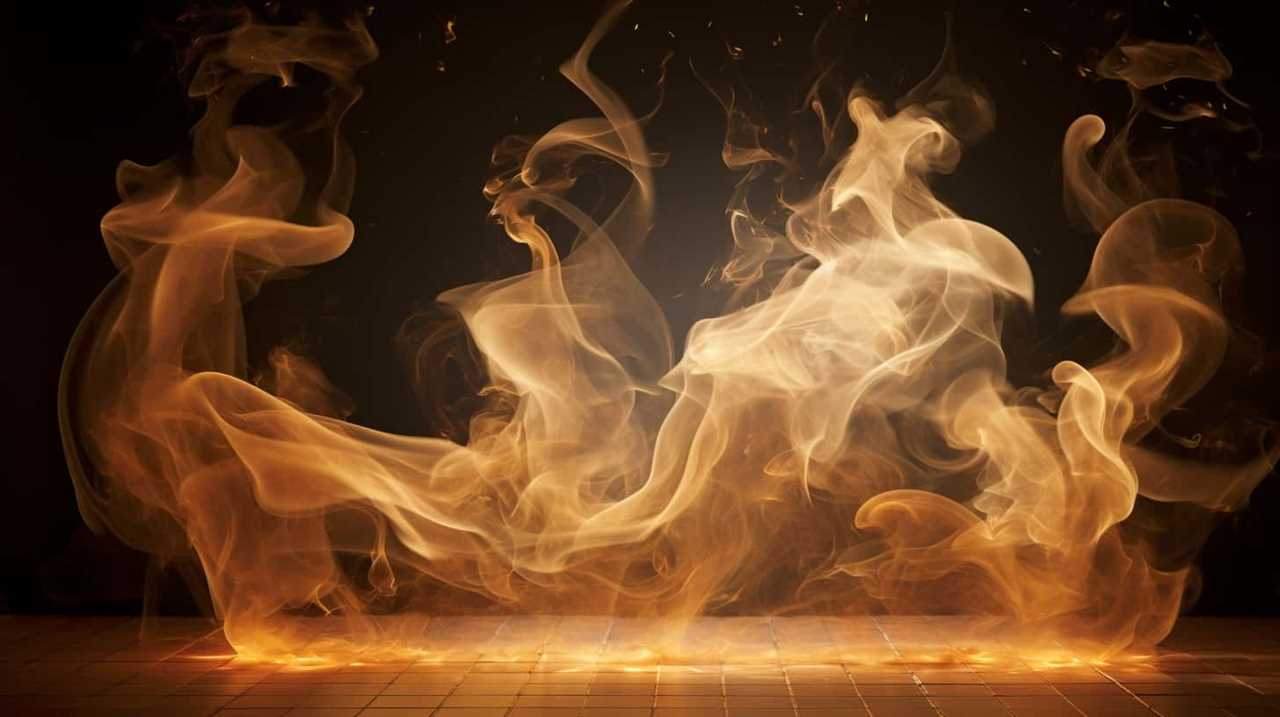
What Are Some Creative Ways to Decorate a Wickless Candle?
Looking to personalize your wickless candle? Get ready for some creative candle decorating ideas! We’ve got unique ways to make your candle stand out and reflect your style. Let’s dive in!
Can I Use a Different Type of Wax for My Wickless Candle?
Yes, we can use different types of wax for our wickless candles. It offers various benefits, such as the ability to incorporate essential oils for a lovely scent. Let’s explore the step-by-step process of making a wickless candle with different wax options.
How Long Does It Take for the Wax to Cool and Harden Completely?
The wax cooling time can vary depending on factors like room temperature and the type of wax used. It typically takes a few hours for the wax to cool and harden completely.
Conclusion
Now that you’ve learned how to make a wickless candle, you can indulge in the cozy and comforting glow of candlelight without any worries. Imagine the soft flickering flames dancing within your beautifully decorated container, filling your space with a warm and inviting atmosphere.
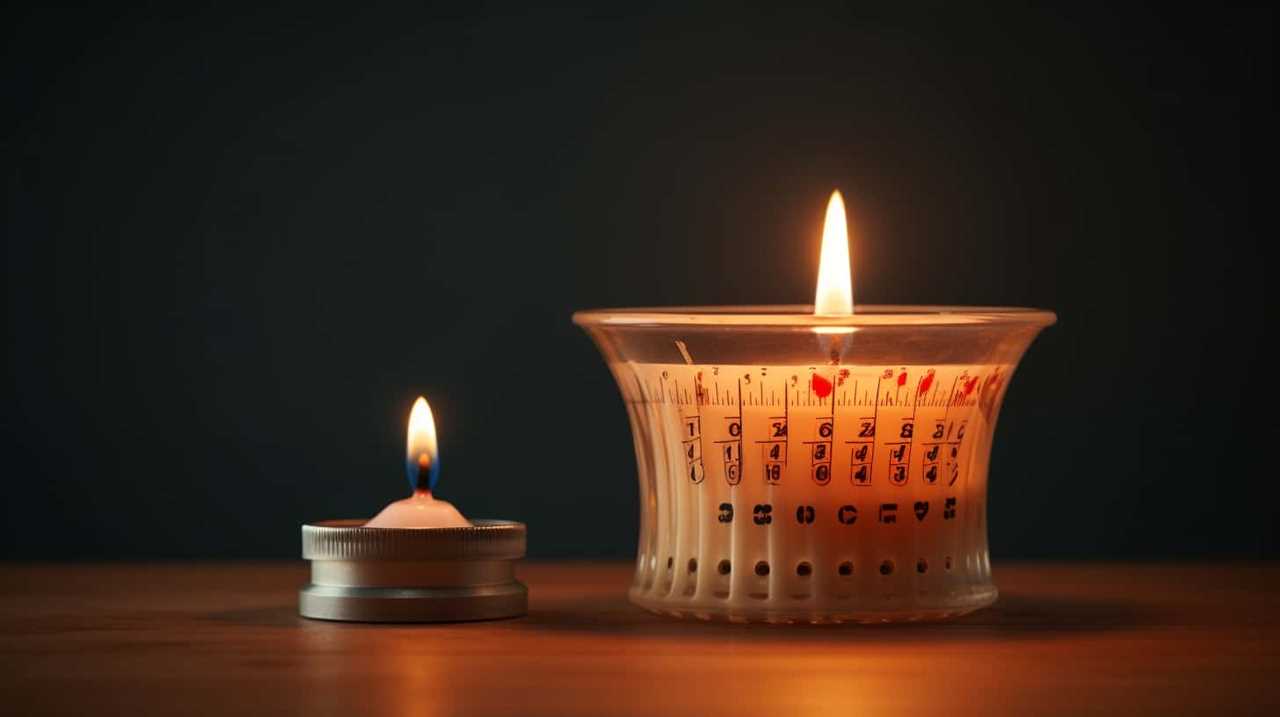
With a bit of creativity and some basic supplies, you can create your own unique wickless candles that will add a touch of magic to any room. So go ahead, unleash your creativity, and enjoy the soothing ambiance of your homemade wickless candles.
My name is Jane and I absolutely adore candles. They can be found all over my house – in every room and on every surface. I am drawn to the delightful scent of candles and how they create a warm and cozy atmosphere.
Candles hold a special place in my heart. They help me unwind and destress after a tiring day. They evoke joyful memories and bring me a sense of tranquility and serenity. I truly cannot picture my life without candles!
Candles
How to Make Candle Labels on Canva

Ready to take your candle-making business to the next level? This guide will walk you through creating stunning candle labels with Canva.
With Canva’s user-friendly interface and powerful design tools, you’ll be able to create professional-looking labels that will make your products stand out from the competition.
We’ll walk you through the process step-by-step, from choosing the perfect template to adding text and graphics that reflect your brand.
Plus, we’ll share tips for a polished finish and guide you on how to print and apply your labels.

Get ready to elevate your candle packaging game and impress your customers with beautiful, custom-made labels.
Let’s dive in!
Key Takeaways
- Canva offers a wide range of templates and customization options for designing candle labels.
- Consider color selection tips, font choices, and graphics to enhance the overall look and feel of the label.
- Canva allows for easy customization of candle labels with a wide range of font styles, layout options, and image placement techniques.
- Experiment with colors, backgrounds, and label design elements to create visually appealing and personalized candle labels.
Getting Started With Canva
To begin creating candle labels on Canva, we’ll first need to familiarize ourselves with the platform and its features. Canva is a user-friendly graphic design tool that offers a wide range of templates and customization options.
When designing candle labels, one of the key factors to consider is the color scheme. Choosing the right colors can evoke different emotions and enhance the overall aesthetic of your labels. Canva provides a vast selection of color palettes to choose from, making it easy to find the perfect combination for your candles.
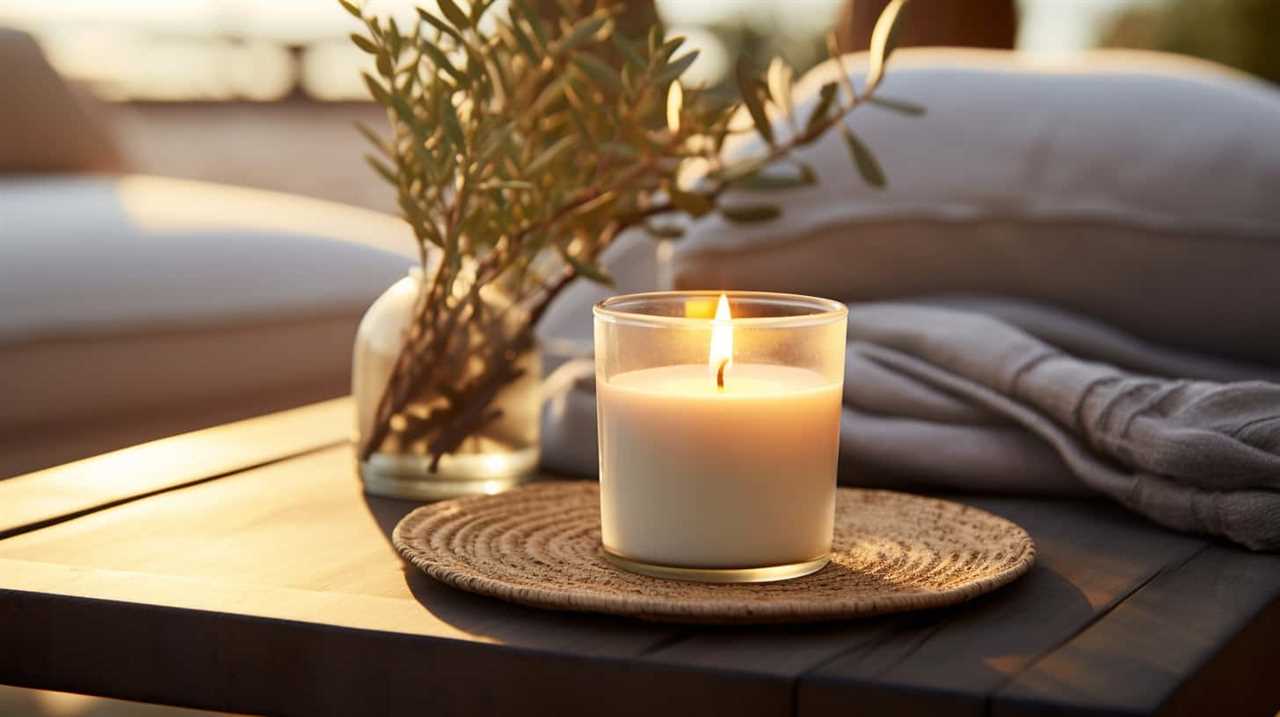
Additionally, Canva offers a variety of design templates specifically designed for labels. These templates provide a great starting point and can be customized to fit your brand and style.
With Canva’s intuitive interface and helpful features, creating stunning candle labels has never been easier.
Choosing the Perfect Template
We can easily find the ideal template for candle labels by exploring Canva’s extensive selection of design options. When it comes to template selection, Canva offers a wide range of choices to suit any style or theme.
Here are five key considerations to keep in mind when browsing for the perfect template:
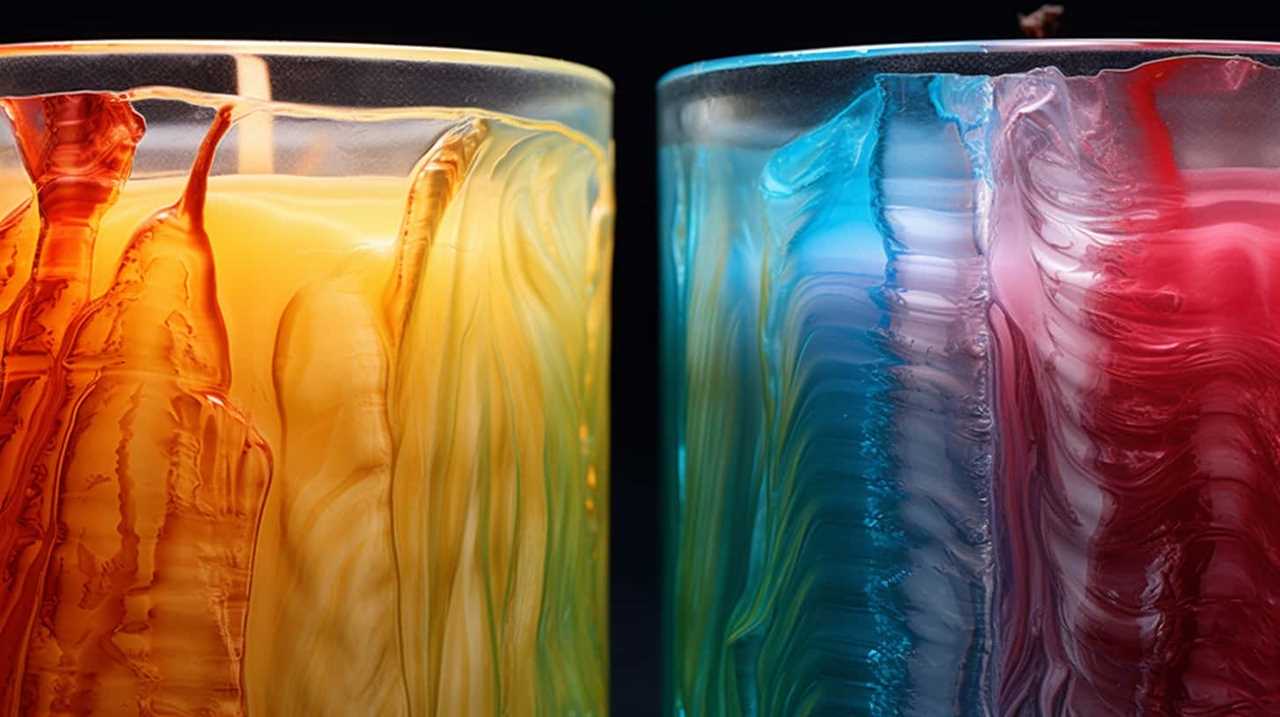
- Design Inspiration: Canva provides a plethora of pre-designed templates that can serve as inspiration for your candle label design.
- Customizability: Look for templates that allow you to customize the colors, fonts, and graphics to match your brand or personal preferences.
- Layout Options: Consider templates with different layout options, such as circular labels, rectangular labels, or even custom shapes.
- Theme and Aesthetic: Choose a template that aligns with the theme and aesthetic of your candles, whether it’s rustic, minimalist, or elegant.
- Label Size: Ensure that the template is the right size for your candle labels, whether you’re using tin containers, glass jars, or any other packaging.
With these considerations in mind, we can now move on to customizing the design elements to create unique and eye-catching candle labels.
Customizing the Design Elements
Now that we’ve chosen the perfect template for our candle labels, let’s dive into customizing the design elements.
The first point to consider is color selection tips, as the right colors can evoke the desired mood or match your brand aesthetic.
Next, we’ll delve into font and typography choices, exploring how different styles can enhance the overall look and feel of the label.
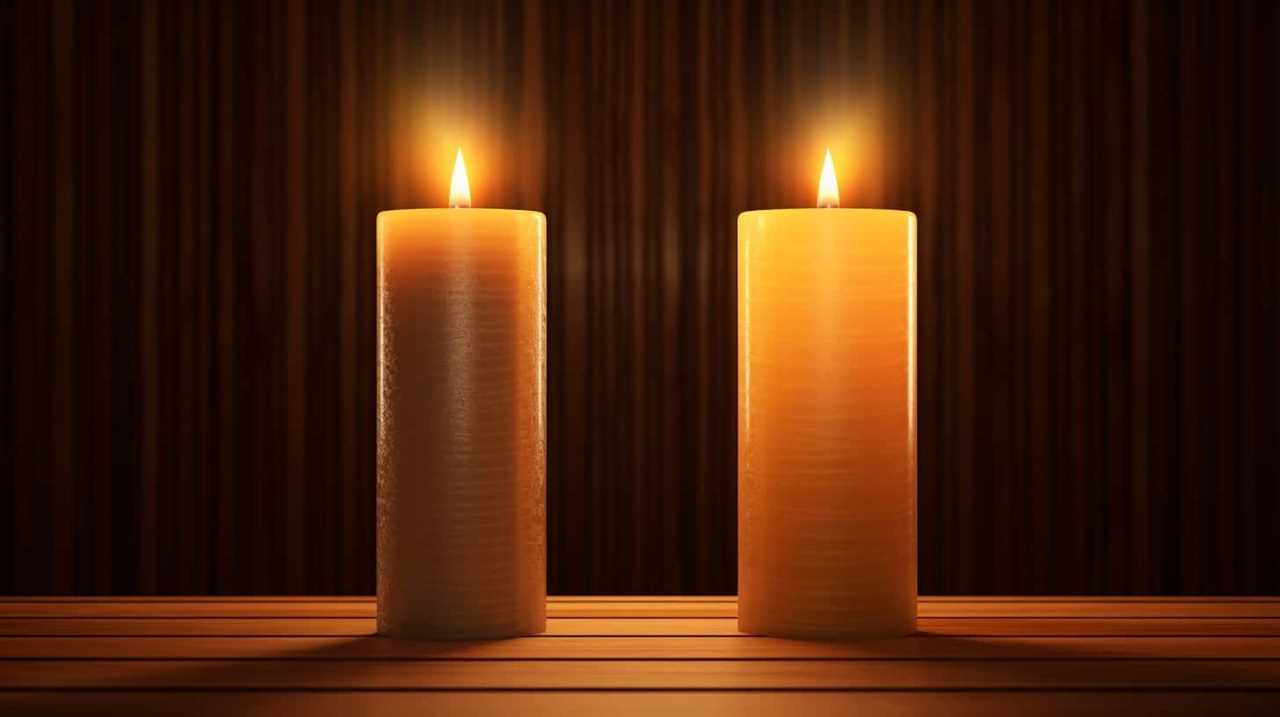
Lastly, we’ll discuss the importance of adding graphics and illustrations to make your candle labels visually appealing and unique.
Color Selection Tips
For the color selection tips when customizing the design elements for your candle labels on Canva, consider using an article determiner. The right colors can make a significant impact on the overall appeal and effectiveness of your candle labels. Here are some tips to help you choose the perfect colors for your labels:
- Understand color psychology and how different colors can evoke specific emotions or convey certain messages.
- Consider the color coordination with your brand identity and the overall theme of your candles.
- Use contrasting colors to make important information or elements stand out.
- Experiment with different color combinations to find the one that best represents your brand and resonates with your target audience.
- Don’t be afraid to use bold and vibrant colors to grab attention and create a memorable impression.
When you’ve chosen the perfect colors for your candle labels, it’s time to move on to the next important aspect: font and typography choices.
Font and Typography Choices
After considering the color selection tips for your candle labels on Canva, it’s important to now focus on customizing the design elements by choosing the right font and typography. Font pairing plays a crucial role in creating visually appealing and cohesive designs. By combining different fonts that complement each other, you can add depth and personality to your candle labels. It’s essential to stay updated with typography trends to ensure your designs look modern and professional. Here are a few popular font pairings and typography trends to consider:
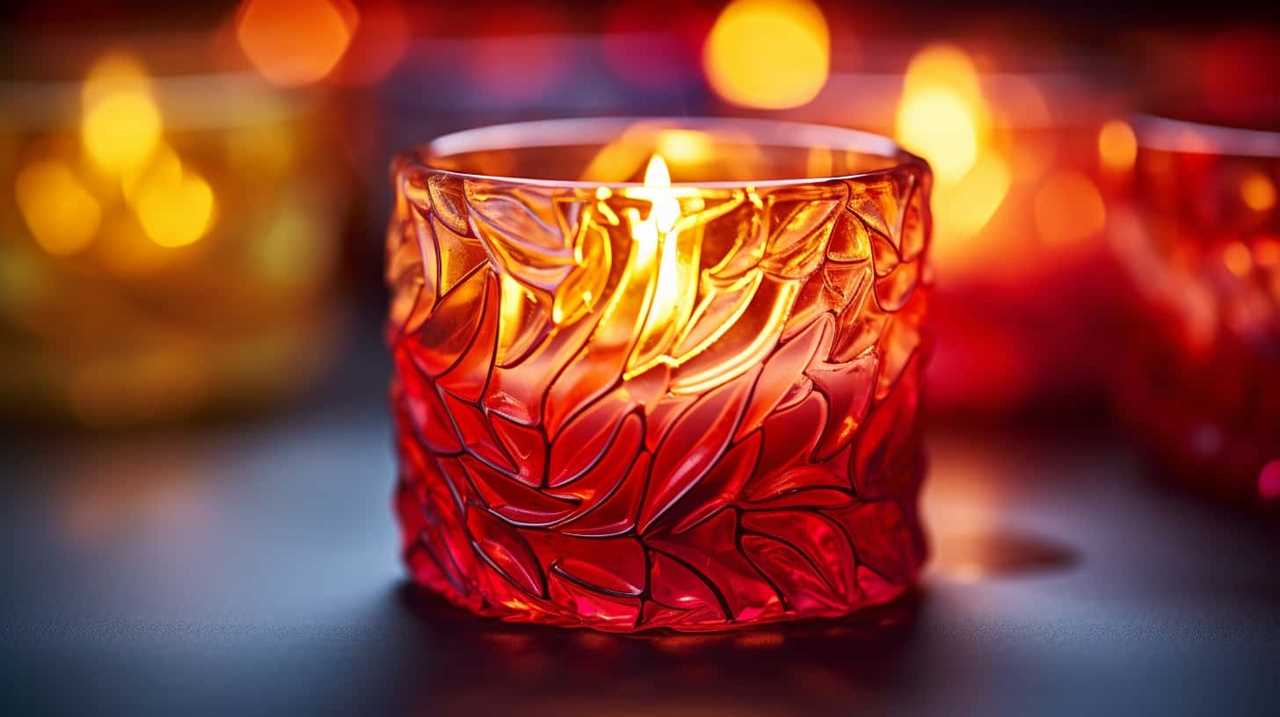
| Font Pairing | Typography Trends |
|---|---|
| Serif + Sans-serif | Minimalistic Designs |
| Script + Sans-serif | Handwritten Elegance |
| Bold + Light | Contrast and Hierarchy |
| Monospace + Sans-serif | Retro and Vintage |
Adding Graphics and Illustrations
To further enhance the visual appeal of your candle labels, we can now delve into the process of incorporating graphics and illustrations into the design elements. Graphics and branding play a significant role in capturing the attention of your customers and conveying your brand’s identity.
Here are five ways to incorporate illustrations into your candle label design:
- Add a small icon or symbol that represents your brand or the scent of the candle.
- Use illustrations to showcase the key ingredients or materials used in the candle.
- Create custom illustrations that reflect the mood or theme of the candle.
- Incorporate illustrations of the candle’s packaging or container to give customers a preview of what they can expect.
- Use graphics to highlight any special features or benefits of the candle, such as long-lasting burn time or eco-friendly ingredients.
By incorporating illustrations strategically, you can create a visually appealing and cohesive candle label design that aligns with your brand’s identity.
Now that we’ve covered the graphics and illustrations, let’s move on to adding text to your candle label.
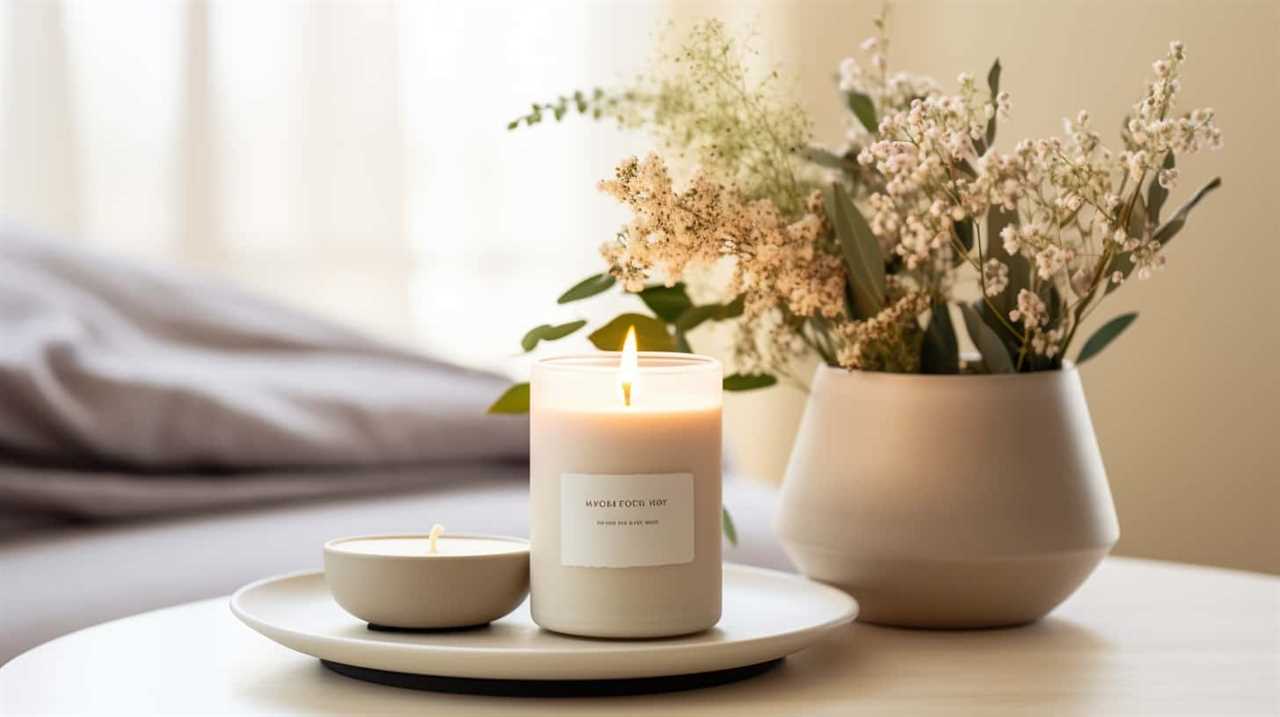
Adding Text to Your Candle Label
We love adding text to our candle labels using Canva because it allows us to easily customize and personalize each label. With Canva’s wide range of font selection and label layout options, we can create beautiful and professional-looking designs that capture the essence of our candles. The right font can evoke a sense of elegance, warmth, or playfulness, depending on the mood we want to convey. To give you an idea of the possibilities, here’s a table showcasing different font styles and their emotional impact:
| Font Style | Emotional Impact |
|---|---|
| Script | Romantic |
| Sans Serif | Modern |
| Serif | Classic |
| Handwritten | Whimsical |
| Bold | Strong |
Incorporating Images and Graphics
When it comes to creating candle labels that catch the eye, the visual impact of graphics is crucial. Incorporating images and graphics in your design can elevate the overall look and feel of your label.
From choosing the right images to utilizing image placement techniques, we’ll explore how to design candle labels that leave a lasting impression.
Visual Impact of Graphics
By incorporating eye-catching images and graphics, we enhance the visual impact of our candle labels on Canva. Visual storytelling is an important aspect of branding, and it helps to convey the message and personality of our candles.
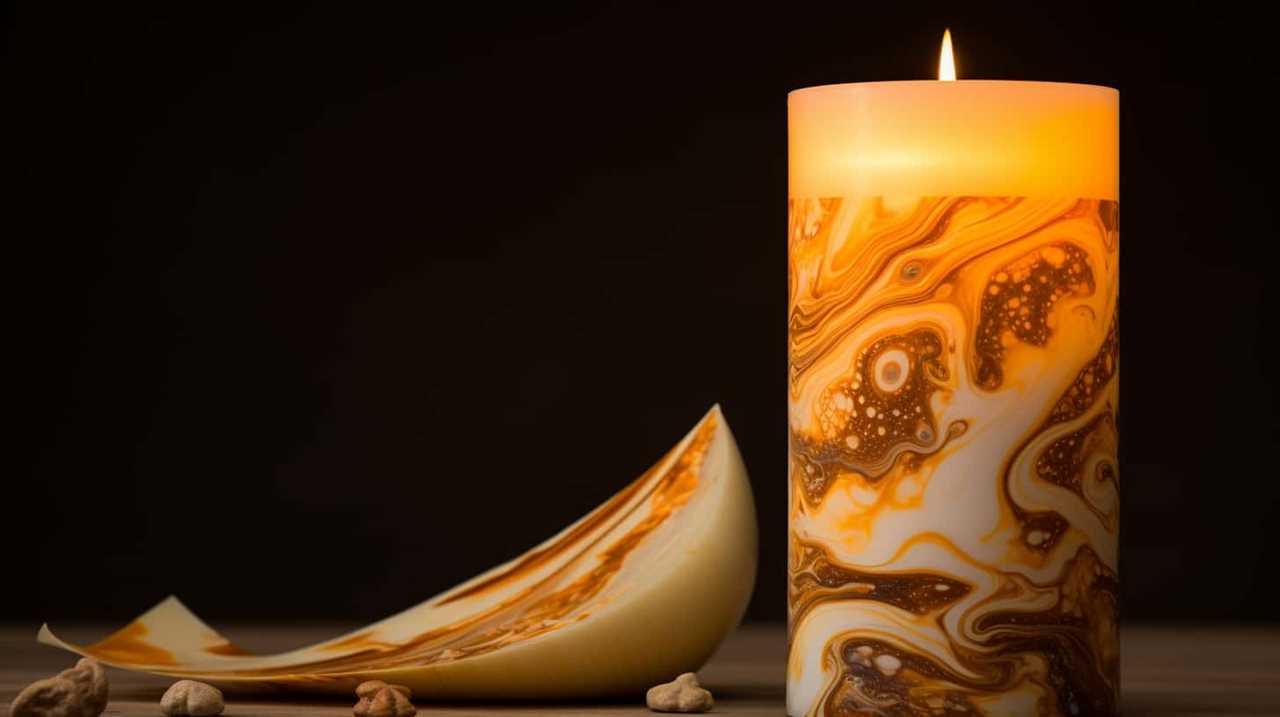
Here are five ways in which we can make our candle labels visually impactful:
- Choose high-quality images that capture the essence of our candles and align with our brand identity.
- Use bold and vibrant colors to draw attention and create a cohesive look.
- Incorporate unique and creative typography to make our labels stand out.
- Experiment with different shapes and layouts to add visual interest and break away from the traditional label design.
- Consider adding subtle textures or patterns to add depth and make our labels more tactile.
Designing With Images
One effective way to enhance the visual appeal of candle labels on Canva is by incorporating high-quality images and graphics. Designing with illustrations not only adds a touch of creativity but also helps to convey the essence of the product.
When incorporating product details into the design, using images can be a powerful tool to showcase the unique features and qualities of the candles. For example, you can include images of the different scents or ingredients used in the candles to give customers a better idea of what they can expect.
Furthermore, graphics such as decorative borders or patterns can add visual interest and make the labels more eye-catching. By carefully selecting and incorporating images and graphics, you can create candle labels that aren’t only visually appealing but also effectively communicate the essence of your product.
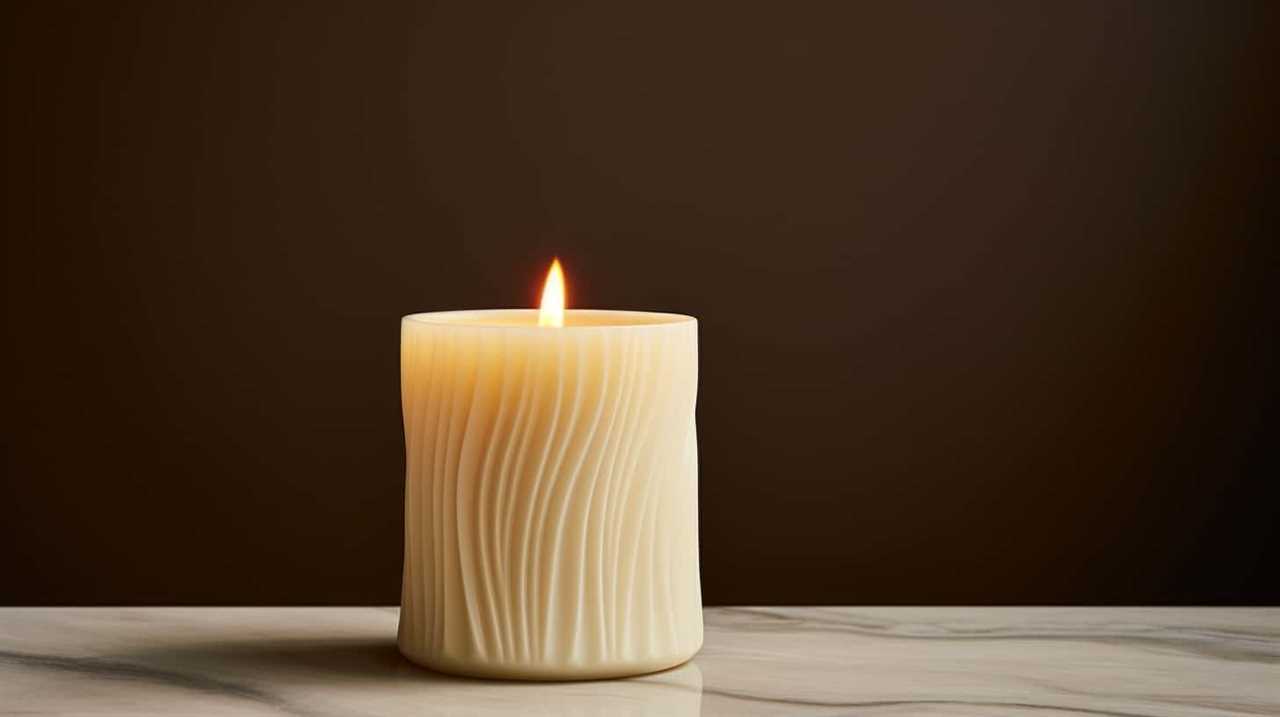
Image Placement Techniques
To incorporate images and graphics effectively into candle labels on Canva, we can utilize various image placement techniques. These techniques allow us to enhance the visual appeal of our labels and create a cohesive and professional design. Here are five image placement techniques that can elevate your candle labels:
- Blend Modes: Experiment with different blend modes to seamlessly integrate your images with the background and other elements of your label design.
- Layering: Use multiple layers to create depth and dimension in your design. Arrange your images in a way that complements the overall composition.
- Masking: Utilize masking techniques to selectively reveal or hide parts of your images. This allows you to create unique effects and highlight specific elements.
- Alignment: Ensure that your images are properly aligned with other design elements, such as text or graphics. This helps maintain a balanced and visually pleasing layout.
- Resizing and Scaling: Adjust the size of your images to fit the label dimensions and maintain clarity. Scaling your images proportionally prevents distortion and pixelation.
Playing With Colors and Backgrounds
We frequently experiment with colors and backgrounds to enhance our candle labels on Canva. Color psychology plays a crucial role in creating a cohesive design that resonates with our audience. By understanding the emotions and associations different colors evoke, we can strategically choose hues that reflect the essence of our brand and the mood we want to convey.
For example, warm tones like red and orange can evoke feelings of warmth and comfort, perfect for cozy candle labels. On the other hand, cool tones like blue and green can create a sense of calm and serenity, ideal for relaxing scents. By experimenting with different color combinations and backgrounds, we can create visually appealing labels that capture the attention of our customers.
Now, let’s dive into how we can use Canva’s design tools and features to bring our candle labels to life.
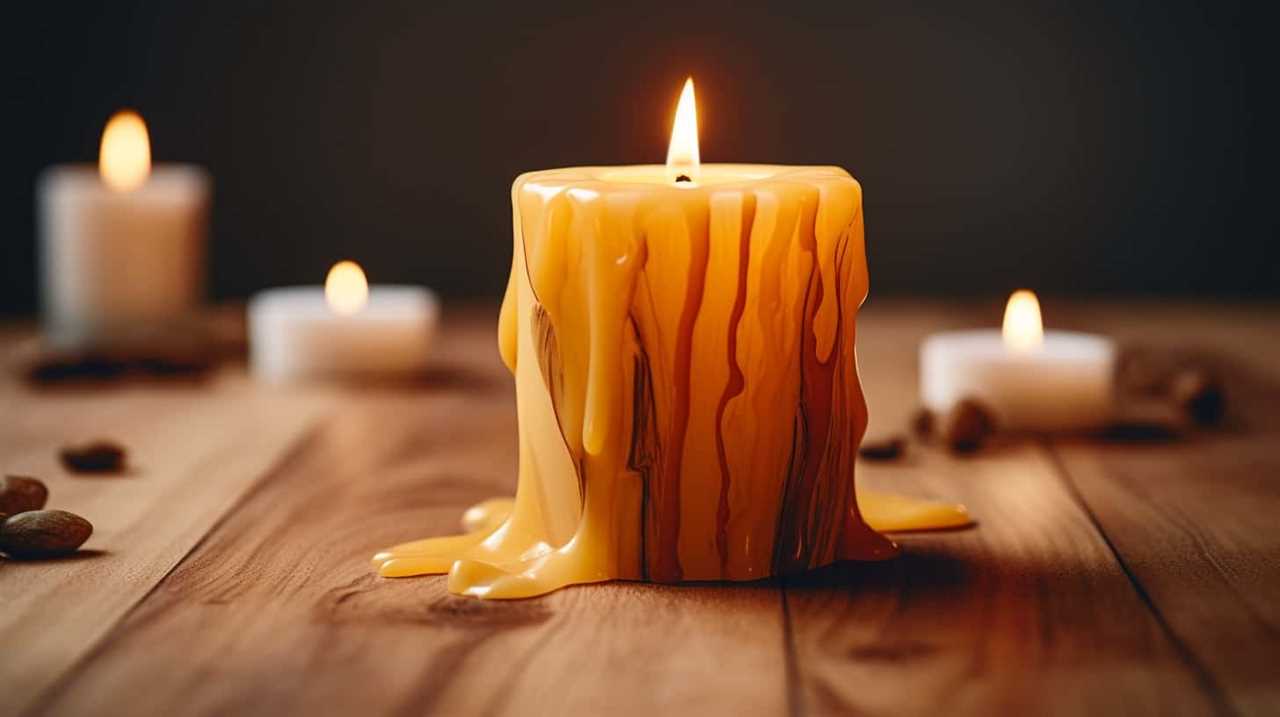
Using Canva’s Design Tools and Features
Our favorite design tool on Canva is its user-friendly interface, which allows us to create stunning candle labels with ease. With Canva’s collaboration features, we can work seamlessly with our team members, making the design process more efficient.
Here are five amazing features that Canva offers for creating candle label mockups:
- Drag-and-drop functionality: Canva’s drag-and-drop feature allows us to effortlessly add and arrange elements on our candle label design.
- Extensive library of templates: Canva provides a wide range of pre-designed templates specifically tailored for candle labels, saving us time and effort.
- Customizable text options: We can choose from a variety of fonts and text styles, ensuring that our candle label design perfectly matches our brand.
- Image editing tools: Canva allows us to edit and enhance our candle label images, making them more visually appealing.
- Access to a vast collection of graphics and illustrations: Canva’s extensive library of graphics and illustrations gives us endless possibilities for creating unique and eye-catching candle label designs.
With these powerful design tools and features, Canva makes creating candle labels a breeze, allowing us to unleash our creativity and produce professional-looking designs.
Making Your Label Unique With Personalization
Let’s add a personal touch to our candle labels by customizing the design and adding unique elements.

By using Canva’s design tools and features, we can create labels that truly reflect our brand and style.
Whether it’s choosing a specific font, adding a personal logo, or incorporating meaningful images, personalization allows us to create labels that stand out and leave a lasting impression on our customers.
Customizing Label Design
To customize the design of your candle labels and make them truly unique, incorporate personalized elements that reflect your brand and aesthetics. Here are some ideas to help you create a stunning label design:
- Custom Label Dimensions: Experiment with different label sizes to find the perfect fit for your candles. Consider square, rectangular, or even circular labels for a distinctive look.
- Label Printing Options: Explore various printing techniques such as foil stamping, embossing, or matte finishes to add texture and visual appeal to your labels.
- Color Palette: Choose colors that align with your brand identity and evoke the desired emotions. Consider using complementary or contrasting shades to make your labels stand out.
- Typography: Select fonts that align with your brand personality and are legible at different sizes. Play with font styles, sizes, and spacing to create visual hierarchy and enhance readability.
- Graphics and Illustrations: Incorporate custom illustrations or graphics that represent your brand or the scent of your candles. These elements can add a touch of uniqueness and personality to your labels.
Adding Personal Touch
One way to make your candle labels unique and personalized is by incorporating a custom logo or monogram. Adding a personal touch to your labels not only makes them stand out but also reflects your brand and style. There are various personalization techniques you can use to make your candle labels truly one-of-a-kind.

For example, you can experiment with different fonts, colors, and graphics to create a visually appealing design. Another creative label idea is to include a handwritten element, such as a signature or a special message, to add a personal and heartfelt touch. Additionally, you can consider using unique shapes or patterns that align with your brand’s aesthetic. By utilizing these personalization techniques, you can create candle labels that aren’t only visually appealing but also reflect your brand’s identity and resonate with your customers.
Now, let’s move on to some tips for achieving a professional-looking finish on your candle labels.
Tips for a Professional-Looking Finish
To achieve a professional-looking finish for your candle labels, we recommend incorporating clean and minimalist designs that align with your brand aesthetic. Here are some tips to help you create labels that stand out:
- Font Pairing: Choose fonts that complement each other and reflect the mood of your brand. A combination of a bold, eye-catching font with a more elegant and legible font can create a visually appealing label.
- Label Sizing: Consider the size and shape of your candle containers when designing your labels. Make sure the labels fit properly and don’t overpower the candles. Experiment with different sizes to find the perfect balance.
- Consistent Branding: Use consistent colors, fonts, and design elements across all your candle labels to create a cohesive and professional look.
- High-Quality Images: Use high-resolution images that showcase your candles in the best light. Avoid pixelation and blur, as they can make your labels look unprofessional.
- Attention to Detail: Pay close attention to spacing, alignment, and overall composition. A well-organized and well-balanced label will give off a professional vibe.
Printing and Applying Your Candle Labels
We recommend using a professional printing service to ensure high-quality results when printing and applying your candle labels. These printing techniques will help bring your designs to life with vibrant colors and sharp details. Look for a printing service that specializes in label printing to ensure they have the necessary equipment and expertise. They can guide you on the best paper and finish options for your labels, such as glossy or matte.

Once you have your beautifully printed labels, it’s time to apply them to your candles. Label application methods can vary depending on the type of label and container you’re using. Some common methods include using adhesive labels, heat shrink sleeves, or printing directly onto the candle itself. Experiment with different methods to find the one that gives you the desired professional finish.
Frequently Asked Questions
How Do I Create a Canva Account?
To create a Canva account, we simply visit the Canva website and click on the "Sign up" button. Then, we fill in our details, choose a password, and voila! We’re ready to start creating amazing designs with Canva.
Can I Use Canva on My Mobile Device?
Yes, you can use Canva on your mobile device. With the Canva mobile app, you have access to a wide range of design templates, allowing you to create stunning candle labels on the go.
Can I Save My Design and Come Back to It Later?
Yes, you can save your design and come back to it later on Canva. This feature ensures the accessibility and convenience of your work, allowing you to easily pick up where you left off and make any necessary adjustments.
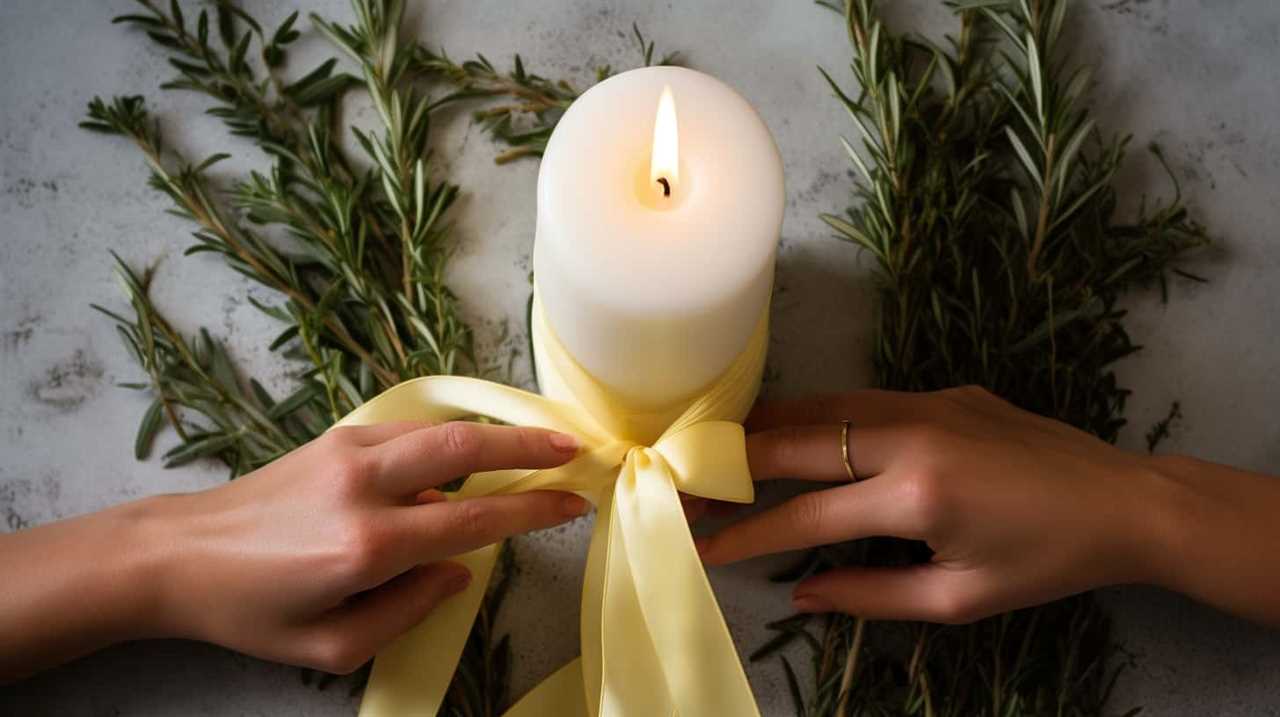
Are There Any Copyright Restrictions on the Images and Graphics Available in Canva?
There are copyright restrictions on the images and graphics in Canva. However, Canva offers a range of licensing options to ensure you can use the content legally and avoid any copyright infringement issues.
Can I Print My Candle Labels at Home or Do I Need to Use a Professional Printing Service?
We can print our candle labels at home or use a professional printing service. Home printing offers convenience and control, while professional printing ensures high-quality results. It depends on our preferences and resources.
Conclusion
So there you have it, folks! Making candle labels on Canva is as easy as pie. Who needs professional designers when you can create stunning labels yourself?
With Canva’s user-friendly interface and a plethora of customizable templates, you’ll have your candles looking like they came straight from a high-end boutique.
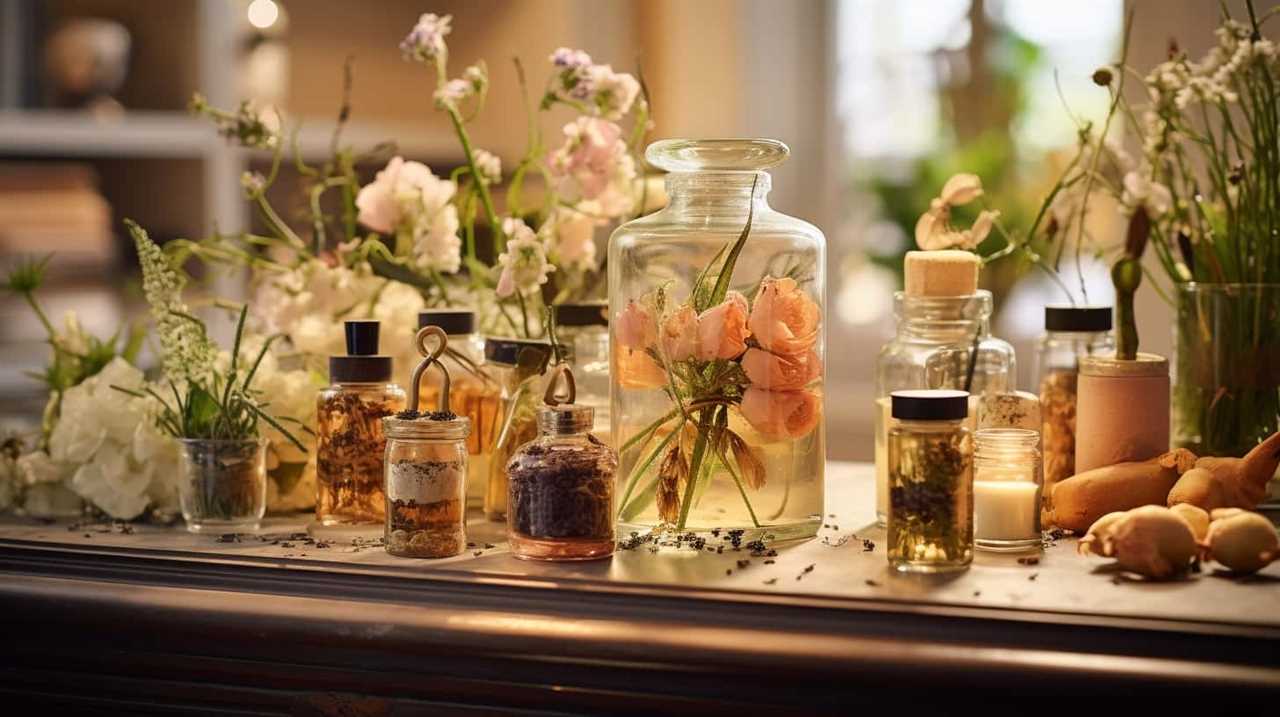
So go ahead, unleash your inner artist and start designing your unique candle labels today. Your customers won’t believe you did it yourself!
My name is Jane and I absolutely adore candles. They can be found all over my house – in every room and on every surface. I am drawn to the delightful scent of candles and how they create a warm and cozy atmosphere.
Candles hold a special place in my heart. They help me unwind and destress after a tiring day. They evoke joyful memories and bring me a sense of tranquility and serenity. I truly cannot picture my life without candles!
-

 Beginners Guides3 months ago
Beginners Guides3 months agoHow to Determine If Candles Will Melt Outside
-

 Beginners Guides3 months ago
Beginners Guides3 months agoWhy is My Candle Not Sticking to the Glass?
-
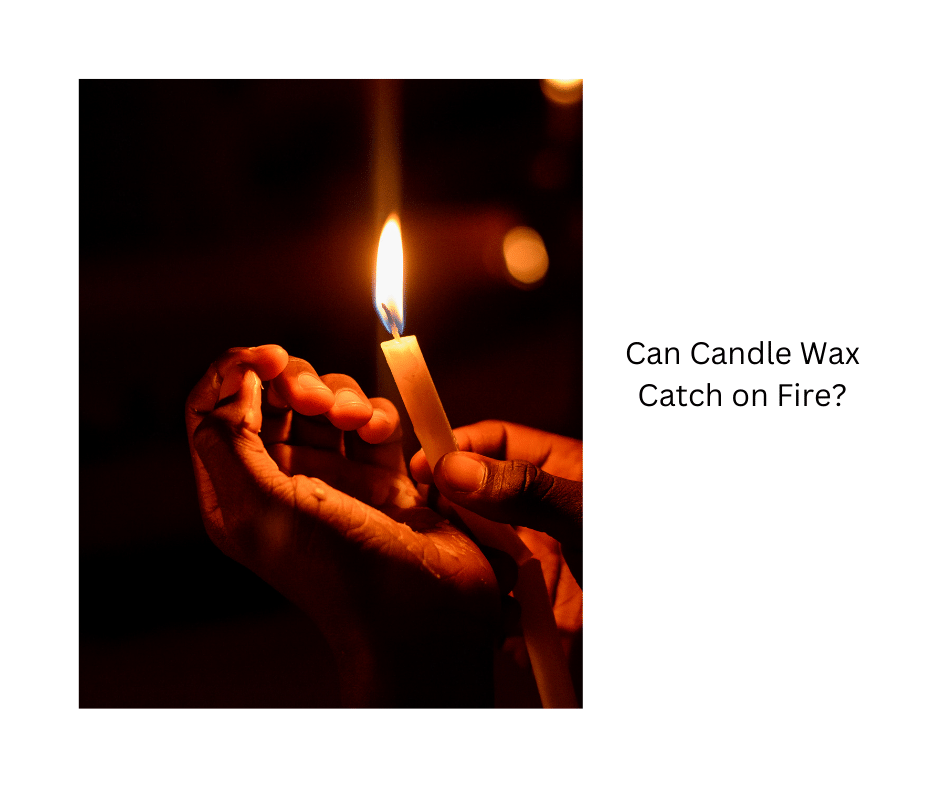
 Beginners Guides3 months ago
Beginners Guides3 months agoCan Candle Wax Catch on Fire?
-

 Beginners Guides3 months ago
Beginners Guides3 months agoHow Many Types Of Candy Are There
-
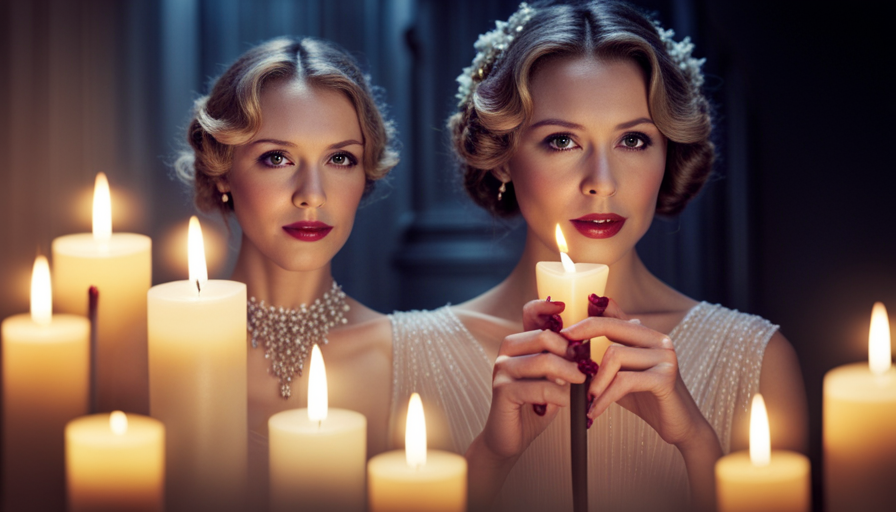
 Beginners Guides3 months ago
Beginners Guides3 months agoHow To Dress A Candle
-

 Beginners Guides3 months ago
Beginners Guides3 months agoWhat Was The First Individually Wrapped Penny Candy In America
-

 Candles3 months ago
Candles3 months agoHow to Make Hidden Message Candle
-

 Candles3 months ago
Candles3 months agoAt What Temperature Should I Pour My Candle Wax




